Why conduct research at KSR?
While some research projects seek solutions to specific challenges, the major thrust is addressing fundamental questions that in this age of environmental uncertainty, urgently need answers:
What limits the geographic ranges of species?
What makes a recently introduced species go invasive?
How do patterns of mating and reproduction contribute to population persistence?
When can natural selection act fast enough to buffer the effects of environmental change?
Who can conduct research at KSR?
Scientists from the University of Toronto and other institutions in Canada and abroad are using KSR resources to expand our knowledge base in biodiversity, ecology and evolution. Principal Investigators are normally affiliated with an accredited university in Canada or abroad, or with a governmental ministry. Applications for use from private corporations and community organizations are also considered.
Please consult with the KSR Director.
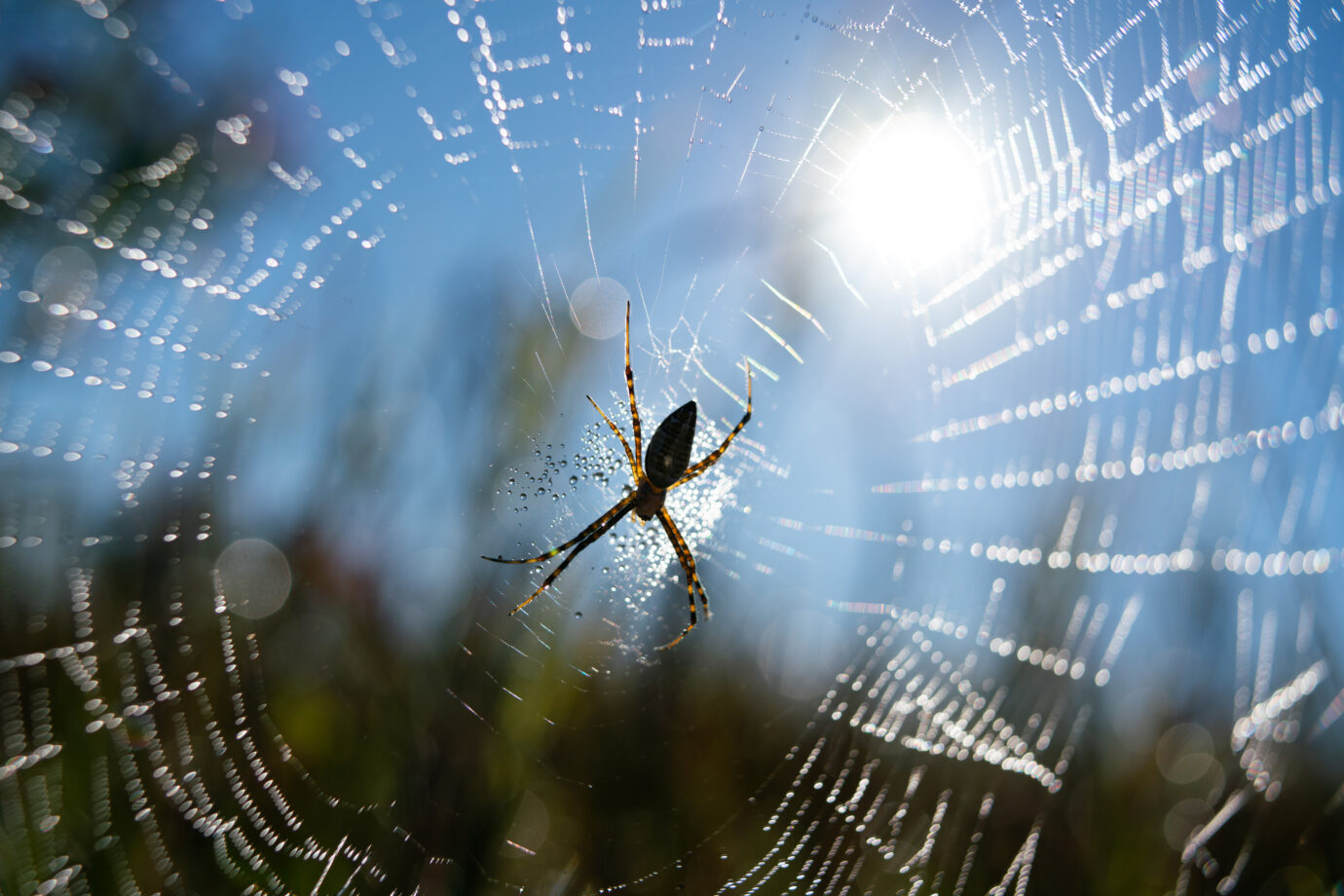
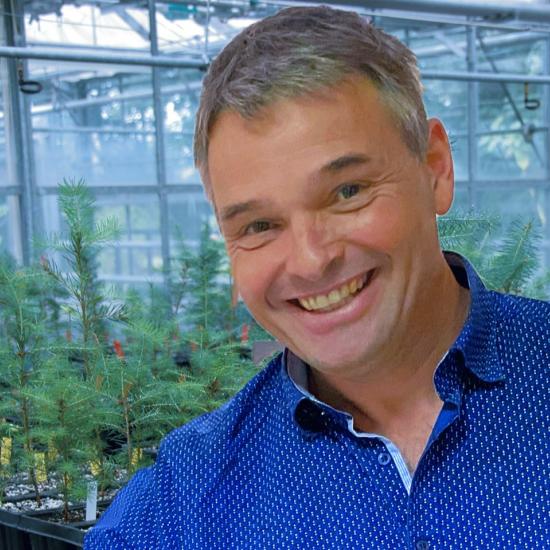
Dr. Ingo Ensminger, The University of Toronto, Department of Plant PhysiologyKSR is more than just an invaluable asset for our research. It’s a gorgeous site, and we feel privileged to have access to it. Our research aims to better understand what limits the growth of trees and how climate change impacts carbon uptake and the health of our forests. We also develop tools for forestry, horticulture, and digital agriculture to address the challenges of global environmental change. Long-term experiments simulate climate warming and drought in the field, while our use of drones and remote sensing monitors vegetation health.
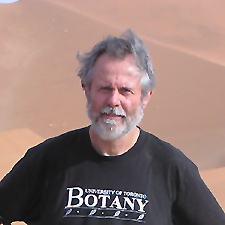
Dr. Spencer Barrett, The University of Toronto, Department of Ecology and Evolutionary BiologyHundreds of students have experienced their first taste of field biology in the fields, marshes and forests of KSR. KSR provides wonderful opportunities for field experiments in ecology and evolution, and for the training of students. Starting with Stephen Wright’s work on sex allocation in Trillium, we have investigated a range of problems in plant reproductive biology using diverse species and approaches. These have included the evolution of wind pollination in Carex (Jannice Friedman) and Thalictrum (David Timerman) and climate adaptation (Rob Colautti) and mating and inbreeding depression (Chris Balogh) in Lythrum.
Field Research
KSR offers an immersive field study experience, with 350 hectares of diverse habitats suitable for a broad spectrum of biological studies.
Forest and wetland communities can accommodate observational and experimental studies that will not significantly alter community structure.
More manipulative studies can be conducted in oldfield communities.
Four artificial ponds are suitable for aquatic research.
Hear what our researchers have to say

Dr. Phoebe Edwards
I studied the vole, a population ecology model species, whose natural cycles in abundance have been an area of interest for ecologists for the past century.
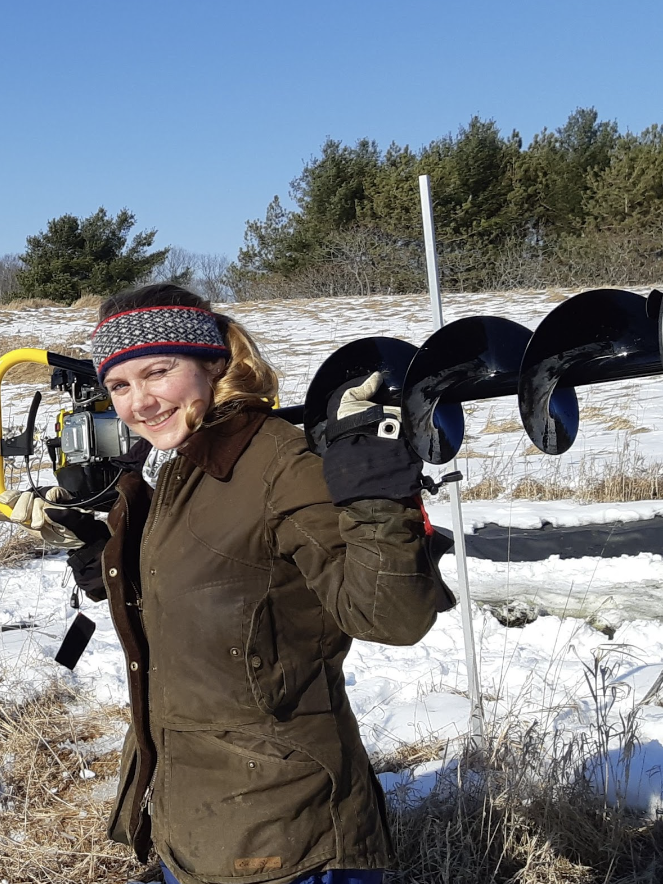
Dr. Rosemary Martin
The Zimmerman-Weis scholarship in field biology has been an important source of funding during my PhD and my time working at KSR.
Laboratory Research
Our state-of-the-art laboratory facilities are equipped with cutting-edge technology to facilitate innovative research and discovery.
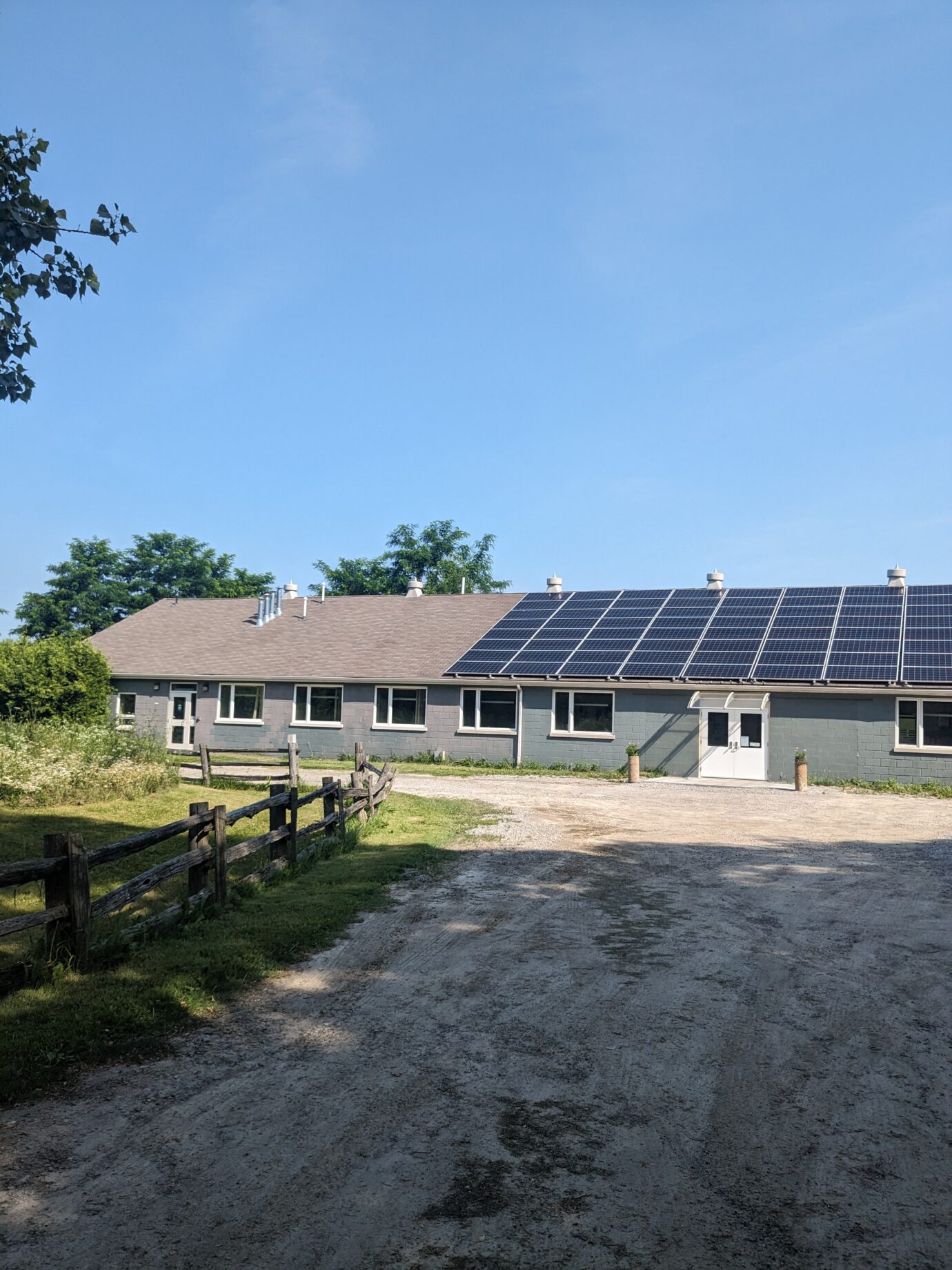

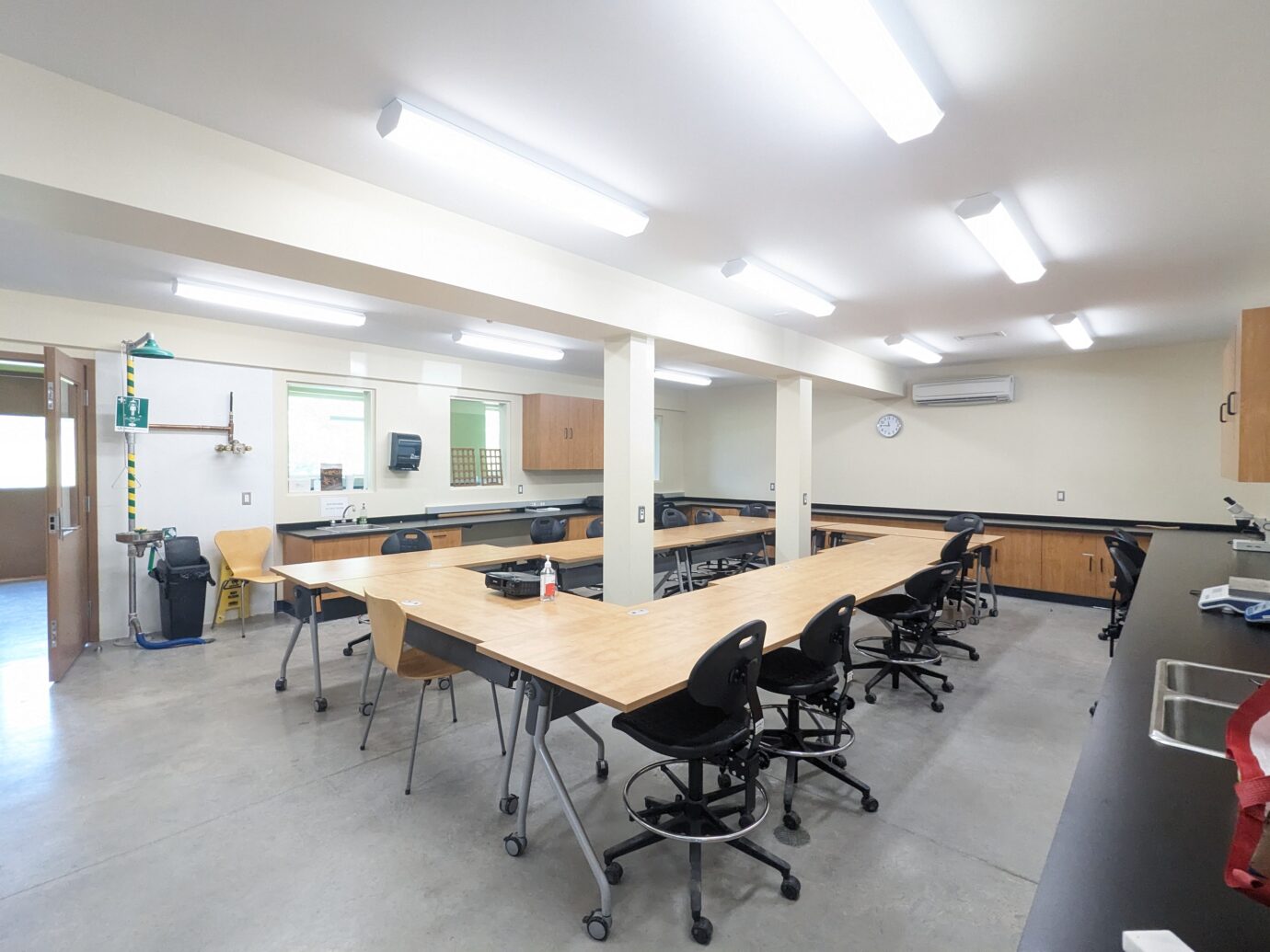


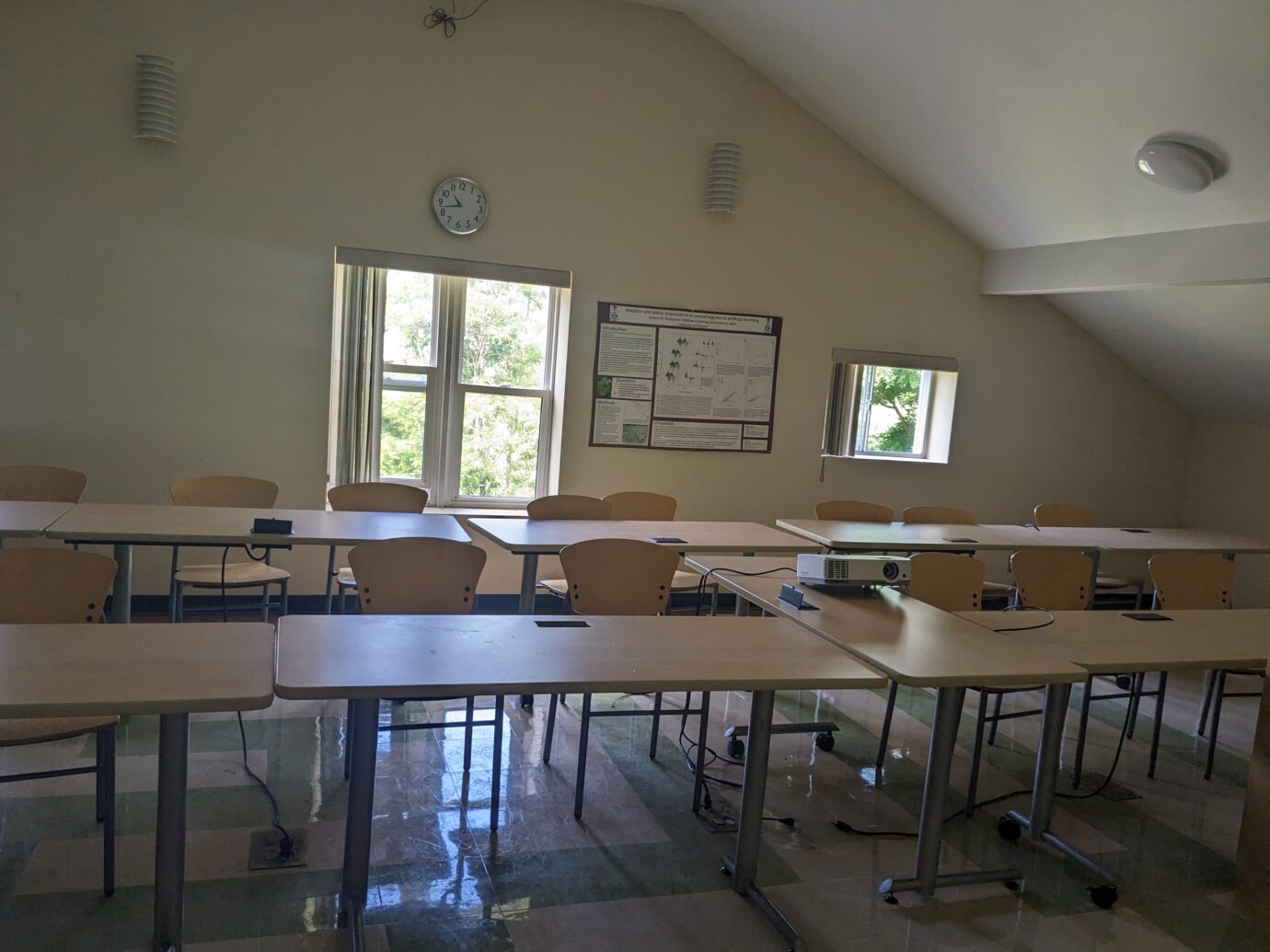
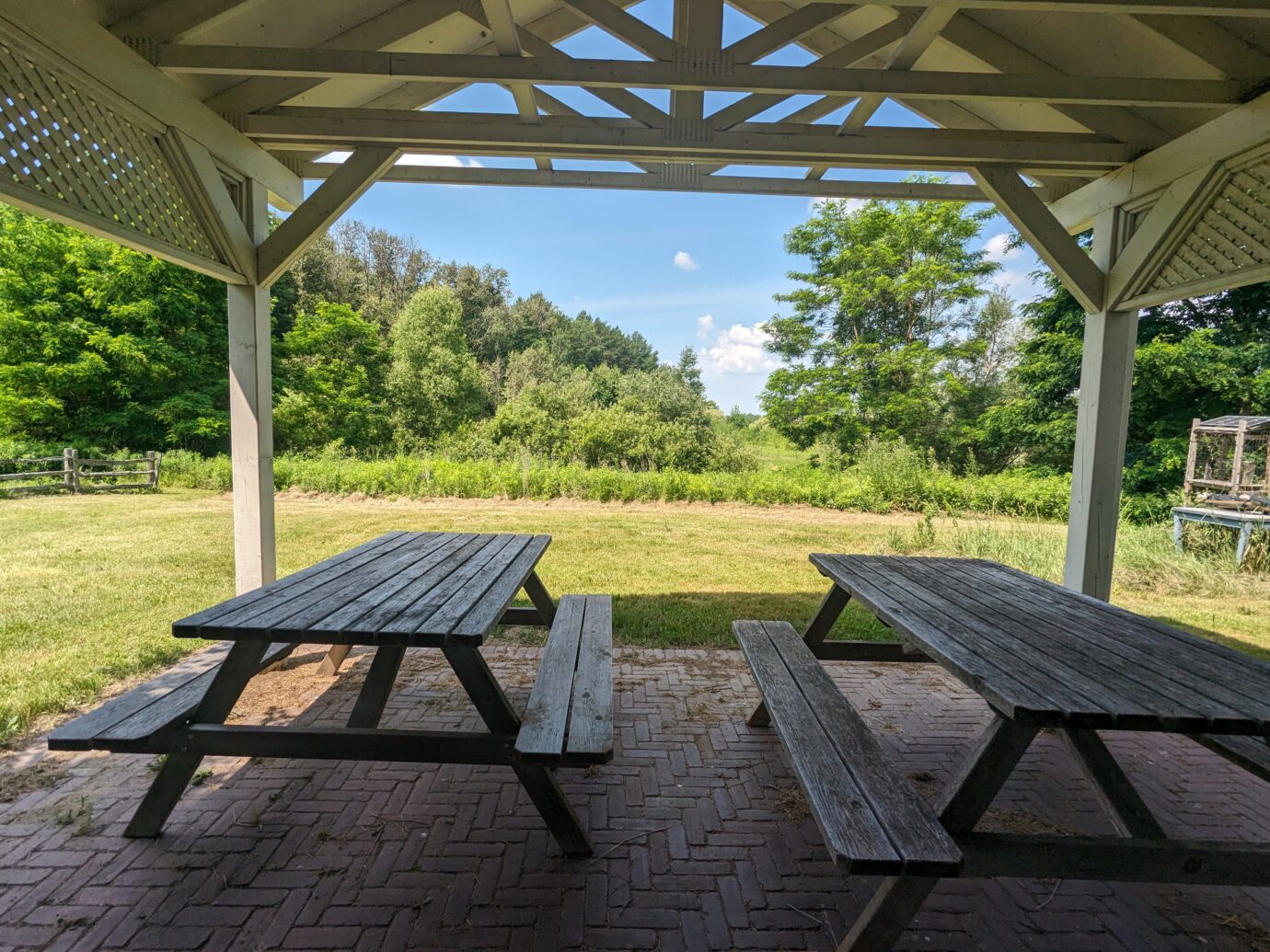
The Laboratory for Biodiversity and Global Change Biology
This fully renovated facility supports field study (opened in 2010, full renovation completed in spring 2018). Common use and “clean” bench space are available, as well as a lab for DNA extraction and amplification. The coffee/lunch room seats 10. Wireless Internet connection is available throughout the building.
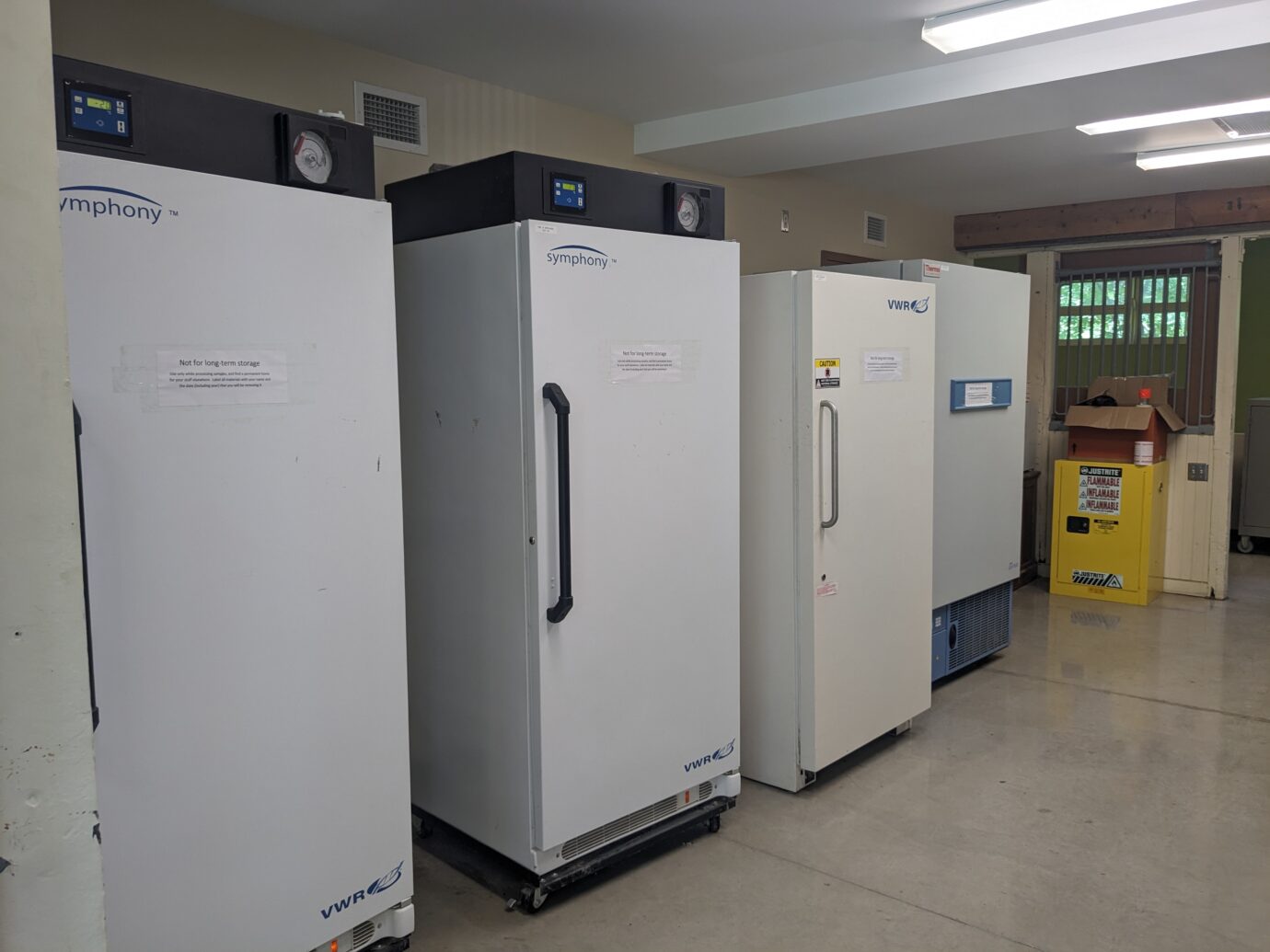
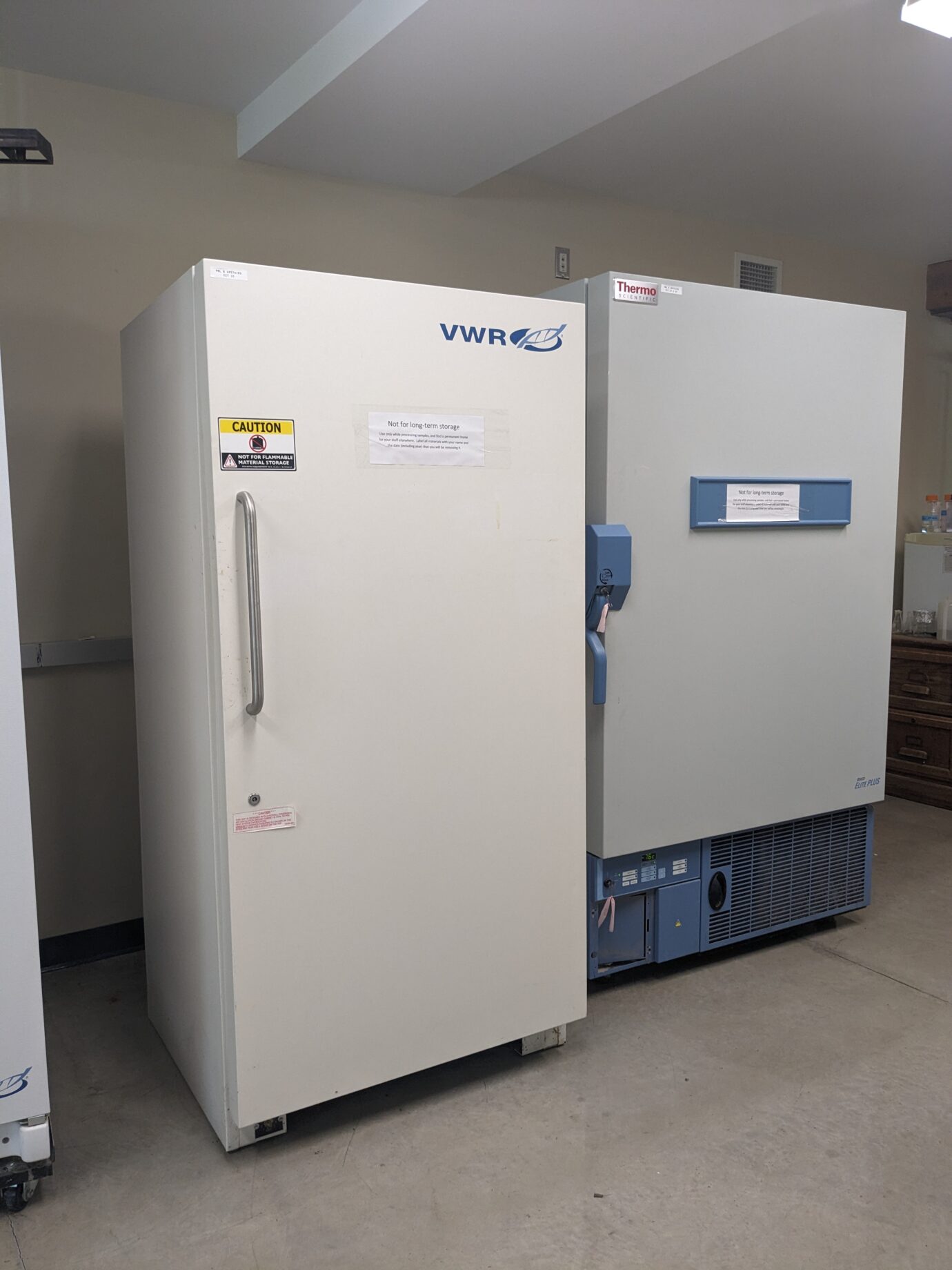

The Common Use Lab
Equipment includes compound and stereomicroscopes, standard and convection drying ovens, refrigerators, freezers and low-temperature incubators. Museum cabinets for storage of reference and voucher specimens of plants and insects are available. Special freezers are reserved for long-term seed storage. A mud room is reserved for cleaning and preparation of field materials.
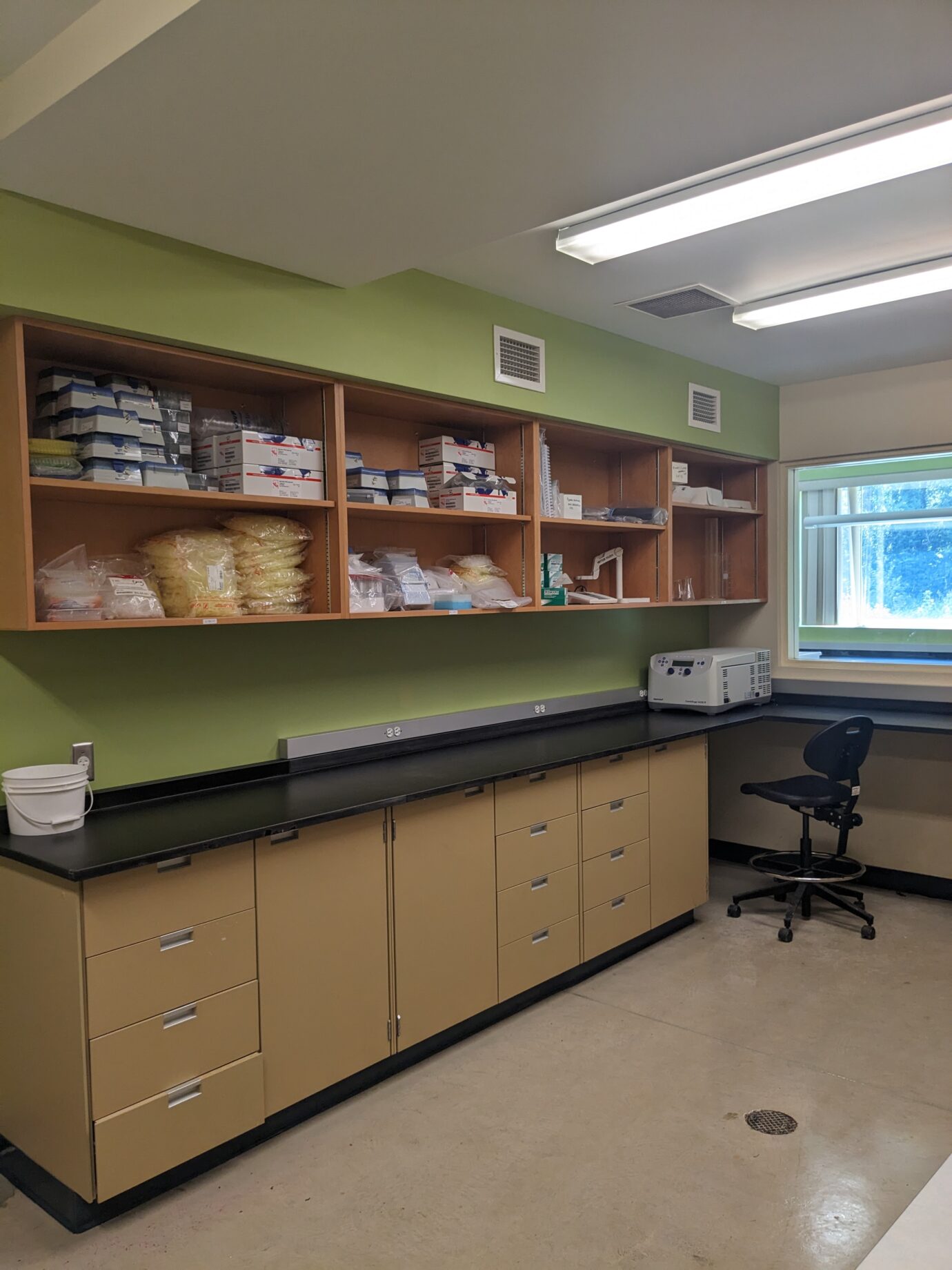
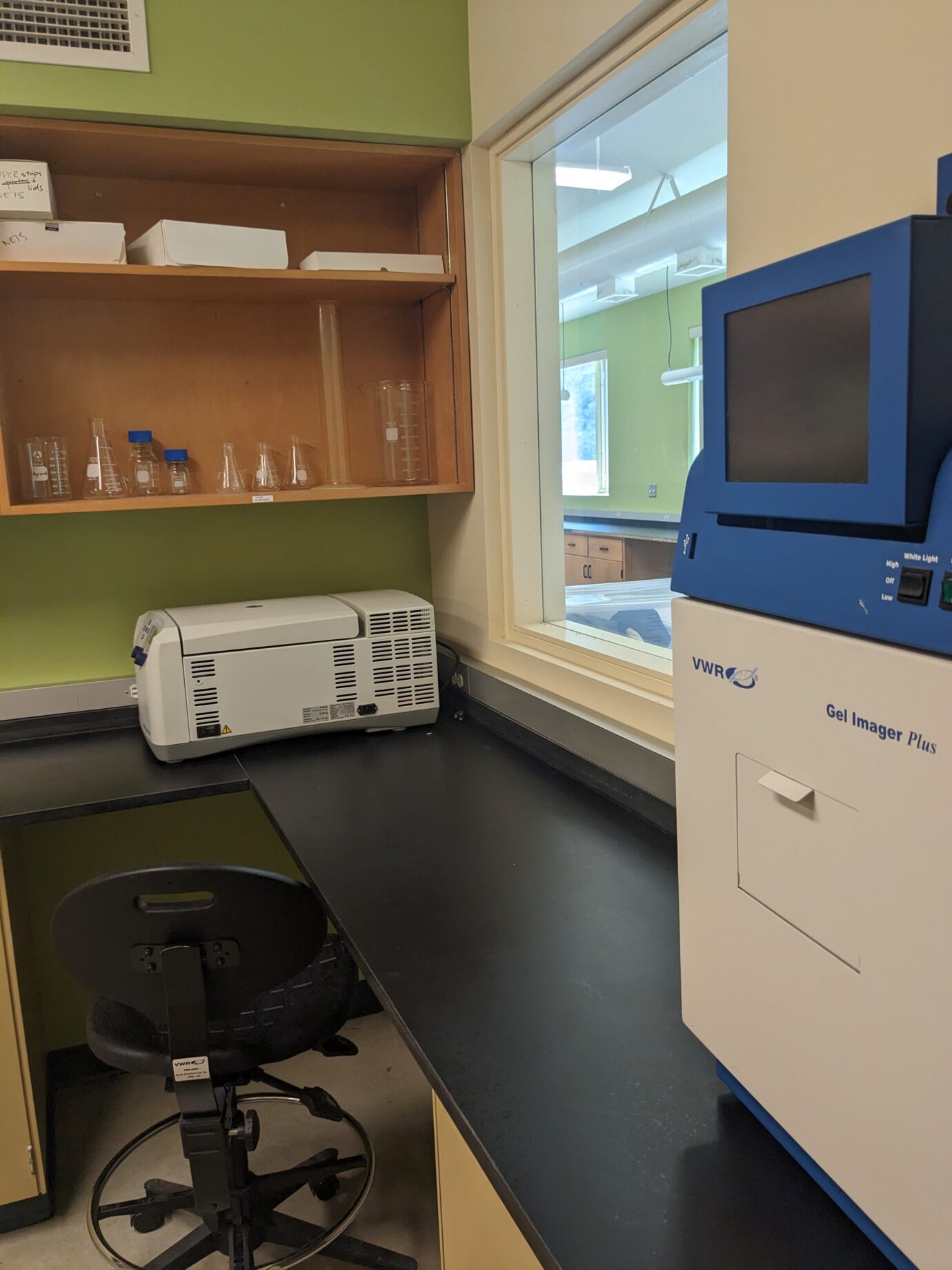
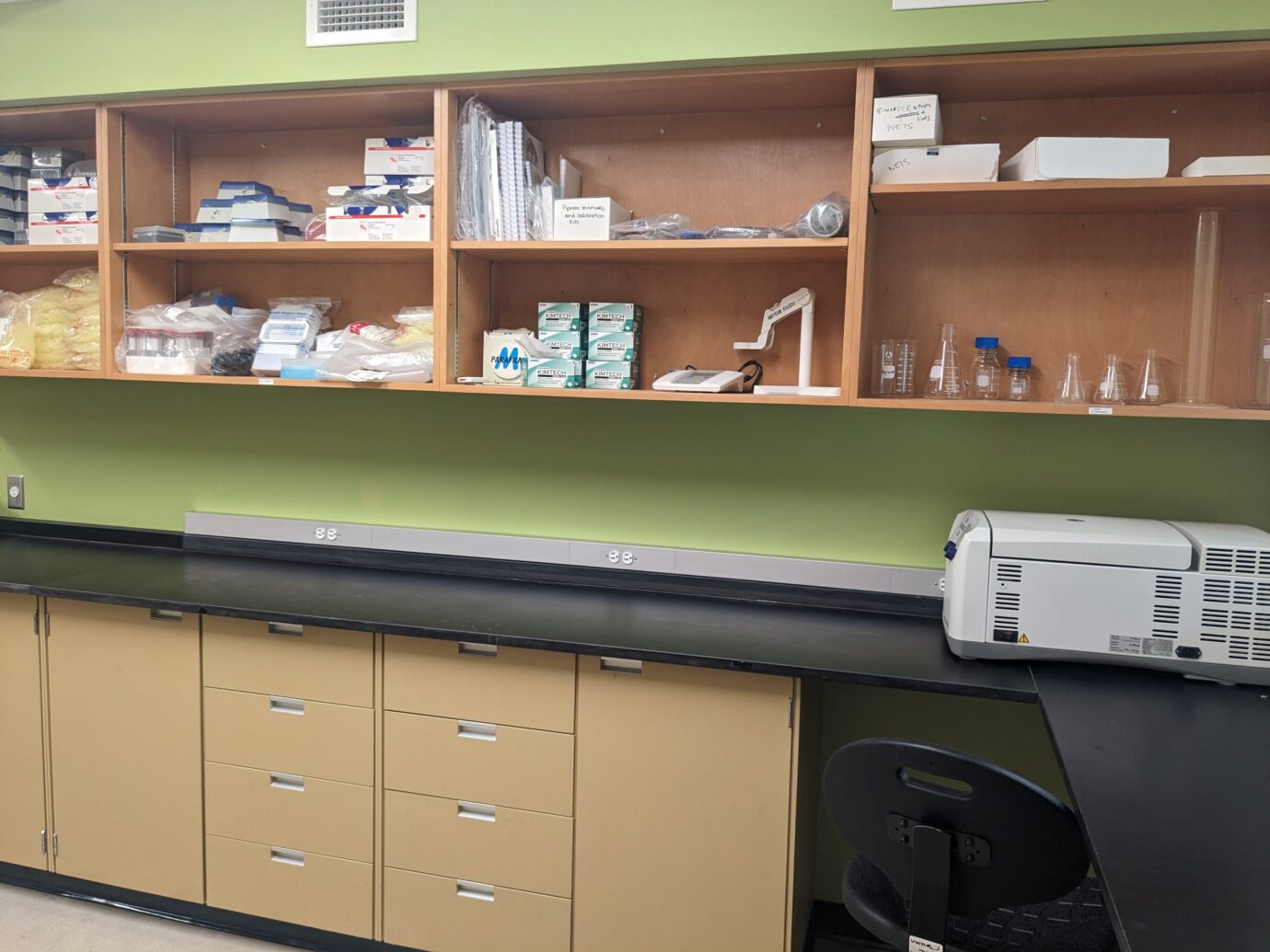
The Molecular Lab
This lab is set up for extraction and amplification of DNA. Equipment includes tissue grinders, Quiagen Cube, PCR machines, gel rigs, a -80 freezer, centrifuges and other basic equipment.
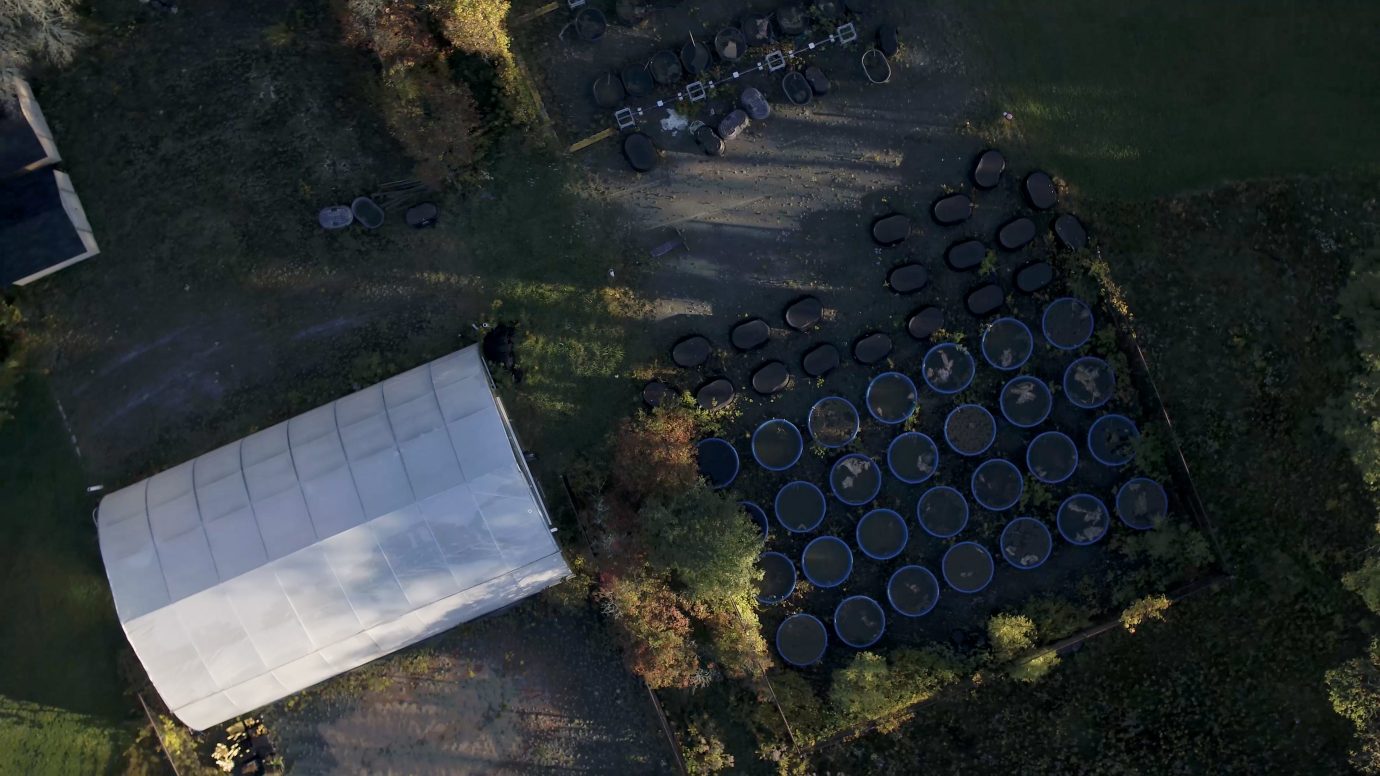
The Greenhouse:
A 300 m2 greenhouse, suitable for seasonal use is available for germination and preparation of materials for planting.
Publications
KSR researchers have contributed to the advancement of scientific knowledge and understanding for decades. For our most up-to-date publications, please see our Google Scholar page.
View by Year
Kishore, B. S. P. C., A. Kumar, P. Saikia, N. Lele, P. Srivastava, S. Pulla, H. Suresh, B. K. Bhattarcharya, M. L. Khan, and R. Sukumar. 2024. Mapping of understorey invasive plant species clusters of Lantana camara and Chromolaena odorata using airborne hyperspectral remote sensing. Advances in Space Research 73:1379-1396.
Edwards, P. D., R. Palme, and R. Boonstra. 2023. Is chronic stress a causal mechanism for small mammal population cycles? Reconciling the evidence. Oecologia 201:609-623.
Henry, G. A., and J. R. Stinchcombe. 2023. G-matrix stability in clinally diverging populations of an annual weed. Evolution 77:49-62.
Henry, G. A., and J. R. Stinchcombe. 2023. Strong selection is poorly aligned with genetic variation in Ipomoea hederacea: implications for divergence and constraint. Evolution 77:1712-1719.
Wu, D., and J. Liebeherr. 2023. A Low-Cost Low-Power LoRa Mesh Network for Large-Scale Environmental Sensing. IEEE Internet of Things Journal.
Bertram, S. M., R. Dakin, S. J. Harrison, D. T. Tremblay, M. L. Reifer, and G. R. Kolluru. 2022. Acoustic signalling performance: variation in vigour at multiple scales. Animal Behaviour 184:157-171.
Luo, R., and B. Gilbert. 2022. Timing of short‐term drought structures plant–herbivore dynamics. Oikos 2022.
Lyu, X., X. Li, D. Dang, H. Dou, K. Wang, and A. Lou. 2022. Unmanned aerial vehicle (uav) remote sensing in grassland ecosystem monitoring: A systematic review. Remote Sensing 14:1096.
McTavish, M., A. Rossi, R. Bourchier, and S. Smith. 2022. Quantifying seeds egested by field-collected earthworms: a dynamic and overlooked pool in forest soil seed banks. The Canadian Field-Naturalist 136:262-267.
O’Brien, A. M., T. F. Lins, Y. Yang, M. E. Frederickson, D. Sinton, and C. M. Rochman. 2022. Microplastics shift impacts of climate change on a plant-microbe mutualism: Temperature, CO2, and tire wear particles. Environmental research 203:111727.
So, C. P., M. M. Sibolibane, and A. E. Weis. 2022. An exploration into the conversion of dominance to additive genetic variance in contrasting environments. American Journal of Botany 109:1893-1905.
Song, C., M. Lu, J. R. Bennett, B. Gilbert, M.-J. Fortin, and A. Gonzalez. 2022. Reconceptualizing beta diversity: a hypervolume geometric approach. bioRxiv:2022.2011. 2027.518099.
Wu, Y., and R. I. Colautti. 2022. Evidence for continent-wide convergent evolution and stasis throughout 150 y of a biological invasion. Proceedings of the National Academy of Sciences 119:e2107584119.
Xie, L., W. Xu, and X. Ding. 2022. Precursory motion and deformation mechanism of the 2018 Xe Pian-Xe Namnoy dam Collapse, Laos: Insights from satellite radar interferometry. International Journal of Applied Earth Observation and Geoinformation 109:102797.
Zhang, V. M., R. L. Martin, and R. L. Murray. 2022. Chronic Road Salt Exposure Across Life Stages and The Interactive Effects of Warming and Salinity in a Semiaquatic Insect. Environmental Entomology 51:313-321.
Benoit, A. D., and C. M. Caruso. 2021. A sit‐and‐wait predator, but not an active‐pursuit predator, alters pollinator‐mediated selection on floral traits. Ecology 102:e03506.
Boyle J. A., A. K. Simonsen, M. E. Frederickson, and J. R. Stinchcombe. 2021. Priority effects alter interaction outcomes in a legume-rhizobium mutualism. Proceedings of the Royal Society. B, Biological sciences 288:20202753.
Dao, P. D., A. Axiotis, and Y. He. 2021. Characterizing the effect of small-scale topographic variability on co-existing native and invasive species in a heterogeneous grassland using airborne hyperspectral remote sensing. bioRxiv 2021.04.11.439344
Dao, P. D., A. Axiotis, and Y. He. 2021. Mapping native and invasive grassland species and characterizing topography-driven species dynamics using high spatial resolution hyperspectral imagery. International Journal of Applied Earth Observation and Geoinformation 104:102542
Dao, P. D., Y. He, and C. Proctor. 2021. Plant drought impact detection using ultra-high spatial resolution hyperspectral images and machine learning. International Journal of Applied Earth Observation and Geoinformation 102:102364.
Edwards, P. D., C. Frenette‐Ling, R. Palme, and R. Boonstra. 2021. A mechanism for population self‐regulation: Social density suppresses GnRH expression and reduces reproductivity in voles. Journal of Animal Ecology 90:784-795.
Edwards, P. D., S. G. Lavergne, L. K. McCaw, S. Wijenayake, R. Boonstra, P. O. McGowan, and M. M. Holmes. 2021. Maternal effects in mammals: broadening our understanding of offspring programming. Frontiers in Neuroendocrinology 62:100924.
Etzler E. A., and D. T. Gwynne. 2021. Sex differences in survival: viability selection in nymphal tree crickets from a conopid fly parasitoid. Ecological Entomology 46:451-458.
Forsyth L. Z., and B. Gilbert. 2021. Parallel responses of species diversity and functional diversity to changes in patch size are driven by distinct processes. Journal of Ecology 109:793-805.
Leite, L. M., S. K. French, C. A. Searcy, and S. J. McCauley. 2021. Forest edges and their effects on the arrival of dragonflies at north-temperate experimental ponds. International Journal of Odonatology 24:38-50.
Lu, B., and Y. He. 2021. Assessing the Impacts of Species Composition on the Accuracy of Mapping Chlorophyll Content in Heterogeneous Ecosystems. Remote Sensing 13:4671.
Lu B., C. Proctor, and Y. He. 2021. Investigating different versions of PROSPECT and PROSAIL for estimating spectral and biophysical properties of photosynthetic and non-photosynthetic vegetation in mixed grasslands. GIScience & Remote Sensing :1-18.
Martin, R. L., and S. J. McCauley. 2021. Risks for overwintering eggs of the dragonfly Sympetrum vicinum in aquatic and terrestrial environments. Hydrobiologia 848:4933-4944.
McGoey, B. V., and J. R. Stinchcombe. 2021. Introduced populations of ragweed show as much evolutionary potential as native populations. Evolutionary Applications 14:1436-1449.
Proctor C., P. D. Dao, and Y. He. 2021. Close-range, heavy-duty hyperspectral imaging for tracking drought impacts using the PROCOSINE model. Journal of quantitative spectroscopy & radiative transfer 263:107528.
Punzalan D., J. T. Fang, W. Chen, and L. Rowe. 2021. Divergence in life history and behaviour between hybridizing Phymata ambush bugs (Heteroptera: Reduviidae). Biological Journal of the Linnean Society.
Schultz, B., and J. Koprivnikar. 2021. The contributions of a trematode parasite infectious stage to carbon cycling in a model freshwater system. Parasitology Research 120:1743-1754.
Xing D., and F. He. 2021. Analytical models for β‐diversity and the power‐law scaling of β‐deviation. Methods in Ecology and Evolution 12:405-414.
Arcila Hernández L. M., S. R. Davis, and A. A. Agrawal. 2020. Host specificity and variation in oviposition behaviour of milkweed stem weevils and implications for species divergence. Ecological Entomology 45:1121-1133.
Baines C. B., S. Diab, and S. J. McCauley. 2020. Parasitism Risk and Infection Alter Host Dispersal. The American Naturalist 196:119-131.
Batstone R. T., M. A. E. Peters, A. K. Simonsen, J. R. Stinchcombe, and M. E. Frederickson. 2020. Environmental variation impacts trait expression and selection in the legume–rhizobium symbiosis. American Journal of Botany 107:195-208.
Boyle J., and D. Start. 2020. Plasticity and habitat choice match colour to function in an ambush bug. Functional Ecology 34:822-829.
Brown K. S., and B. Gilbert. 2020. Population‐ and community‐level rarity have opposing effects on pollinator visitation and seed set. Journal of Ecology 108:1835-1844.
de Bruijn F. J. 2020. The Model Legume Medicago truncatula, 2 Volume Set – Google Books.
deJonge R. B., I. M. Jones, R. S. Bourchier, and S. M. Smith. 2020. Interpreting host-test results for classical biological control candidates: Can the study of native congeners improve the process? Biological Control 145:104237.
Dolezal A. J. 2020. Height differences in clonal stands of Tussilago farfara promote outcrossing by influencing pollinator behaviour. bioRxiv, .
Etzler E. A., and D. T. Gwynne. 2020. Sex differences in survival: viability selection in nymphal tree crickets from a conopid fly parasitoid. Ecological Entomology .
Etzler E. A., W. D. Brown, L. F. Bussière, and D. T. Gwynne. 2020. Oecanthus nigricornis (Orthoptera: Gryllidae) as the first known host of Stylogaster neglecta (Diptera: Conopidae). Canadian Entomologist 152:613-621.
Fréchette E., C. Y. Y. Chang, and I. Ensminger. 2020. Variation in the phenology of photosynthesis among eastern white pine provenances in response to warming. Global Change Biology 26:5217-5234.
Huang M., X. Liu, M. W. Cadotte, and S. Zhou. 2020. Functional and phylogenetic diversity explain different components of diversity effects on biomass production. Oikos 129:1185-1195.
Malloch B., S. Tatsumi, S. Seibold, M. W. Cadotte, |. J. S. Macivor, and J. S. Macivor. 2020. Urbanization and plant invasion alter the structure of litter microarthropod communities. J Anim Ecol 89:2496-2507.
Masonick P., and C. Weirauch. 2020. APPENDIX: Taxonomic revision of the Nearctic erosa species group of Phymata Latreille, 1802 (Heteroptera: Reduviidae: Phymatinae). Canadian Journal of Arthropod Identification 41:AP1-AP27.
McGoey B. V., K. A. Hodgins, and J. R. Stinchcombe. 2020. Parallel flowering time clines in native and introduced ragweed populations are likely due to adaptation. Ecology and Evolution 10:4595-4608.
McKee K. M., J. Koprivnikar, P. T. J. Johnson, and M. T. Arts. 2020. Parasite infectious stages provide essential fatty acids and lipid-rich resources to freshwater consumers. Oecologia 192:477-488.
Meadley-Dunphy S. A., K. M. Prior, and M. E. Frederickson. 2020. Invasive ants disperse seeds farther than native ants, affecting the spatial pattern of seedling recruitment and survival. Oecologia 192:119-132.
Murray R. L., S. Tah, J. Koprivnikar, L. Rowe, and S. J. McCauley. 2020. Exposure to potentially cannibalistic conspecifics induces an increased immune response. Ecological Entomology 45:355-363.
O’Brien A. M., T. F. Lins, Y. Yang, M. E. Frederickson, D. Sinton, and C. M. Rochman. 2020. A common contaminant shifts impacts of climate change on a plant-microbe mutualism: effects of temperature, CO2 and leachate from tire wear particles. bioRxiv, .
O’Brien A. M., Z. H. Yu, D. Luo, J. Laurich, E. Passeport, and M. E. Frederickson. 2020. Resilience to multiple stressors in an aquatic plant and its microbiome. American Journal of Botany 107:273-285.
Prior K. M., S. A. Meadley‐Dunphy, and M. E. Frederickson. 2020. Interactions between seed‐dispersing ant species affect plant community composition in field mesocosms. Journal of Animal Ecology 89:2485-2495.
So C. P. 2020. The Adaptive Potential of Lifetime Fitness Increases under a Future Climate Change Scenario in a Population of Brassica rapa.
Start D. 2020a. Ecological rigidity and the hardness of selection in the wild. Evolution 74:859-870.
Start D. 2020b. Phenotypic plasticity and community composition interactively shape trophic interactions. Oikos 129:1163-1173.
Start D. 2020c. Abundance and traits link predator ontogeny to prey communities. Ecology 101:e03044.
Start D., and S. McCauley. 2020. Gender underlies the formation of STEM research groups. Ecology and Evolution 10:3834-3843.
Start D., A. E. Weis, and B. Gilbert. 2020. Ecological and Evolutionary Stochasticity Shape Natural Selection. The American naturalist 195:705-716.
Start D., M. A. Barbour, and C. Bonner. 2020. Urbanization reshapes a food web. Journal of Animal Ecology 89:808-816.
Teterina A. A., J. H. Willis, and P. C. Phillips. 2020. Chromosome-Level Assembly of the Caenorhabditis remanei Genome Reveals Conserved Patterns of Nematode Genome Organization. Genetics 214:769-780.
Timerman D., and S. C. Barrett. 2020. Influence of local density and sex ratio on pollination in an ambophilous flowering plant. American Journal of Botany 107:587-598.
Zukowski N., D. Kirk, K. Wadhawan, D. Shea, D. Start, and M. Krkošek. 2020. Predators can influence the host‐parasite dynamics of their prey via nonconsumptive effects. Ecology and Evolution 10:6714-6722.
Archer H., and P. C. Phillips. 2019. Experimental evolution of independent genetic pathways for resistance to Pseudomonas aeruginosa pathogenicity within the nematode Caenorhabditis remanei. bioRxiv :484998.
Baines C. B., I. M. C. Ferzoco, and S. J. McCauley. 2019. Phenotype‐by‐environment interactions influence dispersal. Journal of Animal Ecology 88:1263-1274.
Bonner C., N. A. Sokolov, S. E. Westover, M. Ho, and A. E. Weis. 2019. Estimating the impact of divergent mating phenology between residents and migrants on the potential for gene flow. Ecology and Evolution 9:3770-3783.
Borges I. L., L. Z. Forsyth, D. Start, and B. Gilbert. 2019. Abiotic heterogeneity underlies trait-based competition and assembly. Journal of Ecology 107:747-756.
Dao P. D., Y. He, and B. Lu. 2019. Maximizing the quantitative utility of airborne hyperspectral imagery for studying plant physiology: An optimal sensor exposure setting procedure and empirical line method for atmospheric correction. International Journal of Applied Earth Observation and Geoinformation 77:140-150.
De Luca P. A., S. Buchmann, C. Galen, A. C. Mason, and M. Vallejo‐Marín. 2019. Does body size predict the buzz‐pollination frequencies used by bees? Ecology and evolution 9:4875-4887.
Edwards P. D., E. K. Dean, R. Palme, and R. Boonstra. 2019. Assessing space use in meadow voles: the relationship to reproduction and the stress axis. J Mammal 100:4-12.
Ferzoco I. M. C., C. B. Baines, and S. J. McCauley. 2019. Co-occurring Notonecta (Hemiptera: Heteroptera: Notonectidae) species differ in their behavioral response to cues of Belostoma (Hemiptera: Heteroptera: Belostomatidae) predation risk. Annals of the Entomological Society of America 112:402-408.
Franks S. J., M. R. Sekor, S. Davey, and A. E. Weis. 2019. Artificial seed aging reveals the invisible fraction: Implications for evolution experiments using the resurrection approach. Evolutionary Ecology 33:811-824.
French S. K., and S. J. McCauley. 2019. The movement responses of three libellulid dragonfly species to open and closed landscape cover. Insect Conservation and Diversity 12:437-447.
Gordon S. C. C., S. A. Meadley‐Dunphy, K. M. Prior, and M. E. Frederickson. 2019. Asynchrony between ant seed dispersal activity and fruit dehiscence of myrmecochorous plants. American Journal of Botany 106:71-80.
Hernandez D., K. N. Kiesewetter, S. Palakurty, J. R. Stinchcombe, and M. E. Afkhami. 2019. Synergism and symbioses: unpacking complex mutualistic species interactions using transcriptomic approaches. The Model Legume Medicago truncatula :1045-1054.
Johnson S. A., M. M. Tompkins, H. Tompkins, and S. R. Colla. 2019. Artificial Domicile Use by Bumble Bees (Bombus; Hymenoptera: Apidae) in Ontario, Canada. J Insect Sci 19.
Kirk D., D. Shea, and D. Start. 2019. Host traits and competitive ability jointly structure disease dynamics and community assembly. Journal of Animal Ecology 88:1379-1391.
Leebens-Mack J. H., M. S. Barker, E. J. Carpenter, M. K. Deyholos, M. A. Gitzendanner, S. W. Graham, I. Grosse, Z. Li, M. Melkonian, and S. Mirarab. 2019. One thousand plant transcriptomes and the phylogenomics of green plants.
Lu B., and Y. He. 2019. Evaluating empirical regression, machine learning, and radiative transfer modelling for estimating vegetation chlorophyll content using bi-seasonal hyperspectral images. Remote Sensing 11:1979.
Mangahas R. S., R. L. Murray, and S. J. McCauley. 2019. Chronic exposure to high concentrations of road salt decreases the immune response of dragonfly larvae. Frontiers in Ecology and Evolution 7:376.
Mangum S. M. 2019. Measuring Flowering Phenology and its Consequences: A Systematic Review.
McGoey B. V., K. A. Hodgins, and J. R. Stinchcombe. 2019. Parallel clines in native and introduced ragweed populations are likely due to adaptation. bioRxiv :773838.
Nunes K. A., C. R. Fitzpatrick, and P. M. Kotanen. 2019. Soil biota composition and the performance of a noxious weed across its invaded range. Ecography 42:1671-1681.
Samis K. E., J. R. Stinchcombe, and C. J. Murren. 2019. Population climatic history predicts phenotypic responses in novel environments for Arabidopsis thaliana in North America. American journal of botany 106:1068-1080.
Santangelo J. S., K. A. Thompson, and M. T. J. Johnson. 2019. Herbivores and plant defences affect selection on plant reproductive traits more strongly than pollinators. Journal of Evolutionary Biology 32:4-18.
Schultz B., and J. Koprivnikar. 2019. Free-living parasite infectious stages promote zooplankton abundance under the risk of predation. Oecologia 191:411-420.
Sikkink K. L., R. M. Reynolds, C. M. Ituarte, W. A. Cresko, and P. C. Phillips. 2019. Environmental and Evolutionary Drivers of the Modular Gene Regulatory Network Underlying Phenotypic Plasticity for Stress Resistance in the Nematode Caenorhabditis remanei. G3 (Bethesda, Md.) 9:g3.200017.2018-982.
Start D., and S. De Lisle. 2019. Correction to: ‘Sexual dimorphism in a top predator (Notophthalmus viridescens) drives aquatic prey community assembly’. Proceedings of the Royal Society B: Biological Sciences 286:20182899.
Start D. 2019a. The Evolutionary Ecology of Traits and Trait-mediated Interactions.
Start D. 2019b. Individual and Population Differences Shape Species Interactions and Natural Selection. The American Naturalist 194:183-193.
Start D. 2019c. A Black Swan Event Drives Eco-Evolutionary Heterogeneity. Authorea Preprints .
Start D., and B. Gilbert. 2019. Trait variation across biological scales shapes community structure and ecosystem function. Ecology 100:e02769.
Start D., A. E. Weis, and B. Gilbert. 2019a. Indirect Interactions Shape Selection in a Multispecies Food Web. The American Naturalist 193:321-330.
Start D. 2019b. Ecological and Evolutionary Stochasticity Shape Natural Selection. The American Naturalist 195:705-716.
Timerman D., and S. C. H. Barrett. 2019. The spatial ecology of sex ratios in a dioecious plant: Relations between ramet and genet sex ratios. Journal of Ecology 107:1804-1816.
Uzunović J., E. B. Josephs, J. R. Stinchcombe, and S. I. Wright. 2019. Transposable elements are important contributors to standing variation in gene expression in Capsella grandiflora. Molecular biology and evolution 36:1734-1745.
Verbeek J. D., and P. M. Kotanen. 2019. Soil-mediated impacts of an invasive thistle inhibit the recruitment of certain native plants. Oecologia 190:619-628.
Austen E. J., S. Lin, and J. R. K. Forrest. 2018. On the ecological significance of pollen color: a case study in American trout lily (Erythronium americanum). Ecology 99:926-937.
Baines C. B., and S. J. McCauley. 2018. Natal habitat conditions have carryover effects on dispersal capacity and behavior. Ecosphere 9:e02465.
Balogh C. M., and S. C. H. Barrett. 2018. The influence of floral morph ratios and low plant density on mating and fertility in a tristylous colonizing species. Botany 96:533-545.
Balogh C. M. 2018. REPRODUCTIVE ECOLOGY AND GENETICS OF PLANT INVASIONS: A CASE STUDY OF LYTHRUM SALICARIA (PURPLE LOOSESTRIFE). University of Toronto, .
Borges I. L., L. Z. Forsyth, D. Start, and B. Gilbert. 2018. Invader traits and resident functional diversity determine invader establishment in heterogeneous communities. ESA, .
Campbell L. G., S. J. Melles, E. Vaz, R. J. Parker, and K. S. Burgess. 2018. Pollen sleuthing for terrestrial plant surveys: Locating plant populations by exploiting pollen movement. Applications in Plant Sciences 6:e1020.
Chong V. K., H. F. Fung, and J. R. Stinchcombe. 2018. A note on measuring natural selection on principal component scores. Evolution Letters 2:272-280.
De Lisle S. P., S. Paiva, and L. Rowe. 2018. Habitat partitioning during character displacement between the sexes. Biology Letters 14:20180124.
Fitzpatrick C. 2018. Plant evolution, soil ecosystems, and feedback.
Fitzpatrick C. R., J. Copeland, P. W. Wang, D. S. Guttman, P. M. Kotanen, and M. T. J. Johnson. 2018a. Assembly and ecological function of the root microbiome across angiosperm plant species. Proceedings of the National Academy of Sciences 115:E1157-E1165.
Fitzpatrick C. R., P. Lu-Irving, J. Copeland, D. S. Guttman, P. W. Wang, D. A. Baltrus, K. M. Dlugosch, and M. T. J. Johnson. 2018. Chloroplast sequence variation and the efficacy of peptide nucleic acids for blocking host amplification in plant microbiome studies. Microbiome 6:144.
Fitzpatrick C. R., A. V. Mikhailitchenko, D. N. Anstett, and M. T. J. Johnson. 2018b. The influence of range-wide plant genetic variation on soil invertebrate communities. Ecography 41:1135-1146.
Frances D., and S. McCauley. 2018. Warming drives higher rates of prey consumption and increases rates of intraguild predation. Oecologia 187:585-596.
Franks S. J., E. Hamann, and A. E. Weis. 2018. Using the resurrection approach to understand contemporary evolution in changing environments. Evolutionary Applications 11:17-28.
French S. K., and S. J. McCauley. 2018. Canopy cover affects habitat selection by adult dragonflies. Hydrobiologia 818:129-143.
Gilbert B., D. Start, and T. N. Grainger. 2018. Scaling from trophic traits to community function. ESA, .
Grainger T. N., A. I. Rego, and B. Gilbert. 2018. Temperature-dependent species interactions shape priority effects and the persistence of unequal competitors. The American Naturalist 191:197-209.
Lu B., and Y. He. 2018. Optimal spatial resolution of Unmanned Aerial Vehicle (UAV)-acquired imagery for species classification in a heterogeneous grassland ecosystem. GIScience & Remote Sensing 55:205-220.
Lu B., Y. He, and H. H. T. Liu. 2018. Mapping vegetation biophysical and biochemical properties using unmanned aerial vehicles-acquired imagery. International Journal of Remote Sensing 39:5265-5287.
McGoey B. V., and J. R. Stinchcombe. 2018. Introduced populations of ragweed show as much evolutionary potential as native populations.
Nunes K. A., and P. M. Kotanen. 2018a. Does local isolation allow an invasive thistle to escape enemy pressure? Oecologia 188:139-147.
Nunes K. A., and P. M. Kotanen. 2018b. Comparative impacts of aboveground and belowground enemies on an invasive thistle. Ecology and Evolution 8:1430-1440.
Peters M. A. E., and A. E. Weis. 2018. Selection for pollen competitive ability in mixed‐mating systems. Evolution 72:2513-2536.
Searcy C. A., B. Gilbert, M. Krkošek, L. Rowe, and S. J. McCauley. 2018. Positive correlation between dispersal and body size in Green Frogs (Rana clamitans) naturally colonizing an experimental landscape. Can. J. Zool. 96:1378-1384.
Searcy C. A., B. Gilbert, M. Krkošek, L. Rowe, and S. J. McCauley. 2018. Positive correlation between dispersal and body size in green frogs (Rana clamitans) naturally colonizing an experimental landscape. Canadian Journal of Zoology 96:1378-1384.
Start D. 2018a. Keystone individuals alter ecological and evolutionary consumer-resource dynamics. The American Naturalist 191:277-286.
Start D. 2018b. Ontogeny and Consistent Individual Differences Mediate Trophic Interactions. The American Naturalist 192:301-310.
Start D. 2018c. Predator macroevolution drives trophic cascades and ecosystem functioning. Proceedings of the Royal Society B: Biological Sciences 285:20180384.
Start D. 2018d. Animal behaviour and algal camouflage jointly structure predation and selection. Journal of Evolutionary Biology 31:773-778.
Start D., and B. Gilbert. 2018. Plant sex alters Allee effects in aggregating plant parasites. Oikos 127:792-802.
Start D., and S. De Lisle. 2018. Sexual dimorphism in a top predator (Notophthalmus viridescens) drives aquatic prey community assembly. Proceedings of the Royal Society B: Biological Sciences 285:20181717.
Start D., and D. Kirk. 2018. Population isolation predicts the severity of historical human epidemics. Global Ecology and Biogeography 27:726-733.
Start D., S. McCauley, and B. Gilbert. 2018. Physiology underlies the assembly of ecological communities. Proceedings of the National Academy of Sciences 115:6016-6021.
Start D., C. Bonner, A. E. Weis, and B. Gilbert. 2018. Consumer-resource interactions along urbanization gradients drive natural selection*. Evolution 72:1863-1873.
Timerman D., and S. C. H. Barrett. 2018. Divergent selection on the biomechanical properties of stamens under wind and insect pollination. Proceedings of the Royal Society B: Biological Sciences 285:20182251.
Verbeek J. D. 2018. Shared Enemies and the Competitive Ability of Native Plants in Populations of an Invasive Plant (Cirsium arvense). University of Toronto, .
Weis A. E. 2018. Detecting the “invisible fraction” bias in resurrection experiments. Evolutionary Applications 11:88-95.
Wood C. W., B. L. Pilkington, P. Vaidya, C. Biel, and J. R. Stinchcombe. 2018. Genetic conflict with a parasitic nematode disrupts the legume–rhizobia mutualism. Evolution Letters 2:233-245.
Yeo Y. T. 2018. Design and Control of A Tilt-Rotor Unmanned Aerial Vehicle for Wetland Inspection . University of Toronto.
Abernethy S. 2017. Effects of Local Rural Land Use on Forest Habitats in Southern Ontario. York University, .
Austen E. J., L. Rowe, J. R. Stinchcombe, and J. R. K. Forrest. 2017. Explaining the apparent paradox of persistent selection for early flowering. New Phytologist 215:929-934.
Baines C. B., I. M. Ferzoco, and S. J. McCauley. 2017. Sex-biased dispersal is independent of sex ratio in a semiaquatic insect. Behav Ecol Sociobiol 71:1-7.
Braukmann T. W. A., M. L. Kuzmina, J. Sills, E. V. Zakharov, and P. D. N. Hebert. 2017. Testing the Efficacy of DNA Barcodes for Identifying the Vascular Plants of Canada. PLOS ONE 12:e0169515.
Cadotte M. W. 2017. Functional traits explain ecosystem function through opposing mechanisms. Ecology Letters 20:989-996.
Cadotte M. W., S. W. Livingstone, S. E. Yasui, R. Dinnage, J. Li, R. Marushia, J. Santangelo, and W. Shu. 2017. Explaining ecosystem multifunction with evolutionary models. Ecology 98:3175-3187.
De Lisle S. P. 2017. Ecological Aspects of Sexual Dimorphism. University of Toronto, .
deJonge R. B., R. S. Bourchier, and S. M. Smith. 2017. Initial Response by a Native Beetle, Chrysochus auratus (Coleoptera: Chrysomelidae), to a Novel Introduced Host-Plant, Vincetoxicum rossicum (Gentianales: Apocynaceae). Environ Entomol 46:617-625.
Fitzpatrick C. R., L. Gehant, P. M. Kotanen, and M. T. J. Johnson. 2017. Phylogenetic relatedness, phenotypic similarity and plant–soil feedbacks. Journal of Ecology 105:786-800.
Frances D. N., J. Y. Moon, and S. J. McCauley. 2017. Effects of environmental warming during early life history on libellulid odonates. Can. J. Zool. 95:373-382.
Genua L., D. Start, and B. Gilbert. 2017. Fragment size affects plant herbivory via predator loss. Oikos 126:1357-1365.
Grainger T. N., and B. Gilbert. 2017. Multi-scale responses to warming in an experimental insect metacommunity. Global Change Biology 23:5151-5163.
Grainger T. N., A. I. Rego, and B. Gilbert. 2017. Temperature-Dependent Species Interactions Shape Priority Effects and the Persistence of Unequal Competitors. The American Naturalist 191:197-209.
Grainger T. N., R. M. Germain, N. T. Jones, and B. Gilbert. 2017. Predators modify biogeographic constraints on species distributions in an insect metacommunity. Ecology 98:851-860.
Ison J. L., and A. E. Weis. 2017. Temporal population genetic structure in the pollen pool for flowering time: A field experiment with Brassica rapa (Brassicaceae). American Journal of Botany 104:1569-1580.
Lee Y., and P. M. Kotanen. 2017. Differences in herbivore damage to Arctium minus in open and forest habitats in its non-native range. Botany 95:841-845.
Lewis J. A., and T. E. Pitcher. 2017. Tactic-specific benefits of polyandry in Chinook salmon Oncorhynchus tshawytscha. Journal of Fish Biology 90:1244-1256.
Loughnan D., and B. Gilbert. 2017. Trait-mediated community assembly: distinguishing the signatures of biotic and abiotic filters. Oikos 126:1112-1122.
Lu B., and Y. He. 2017. Species classification using Unmanned Aerial Vehicle (UAV)-acquired high spatial resolution imagery in a heterogeneous grassland. ISPRS Journal of Photogrammetry and Remote Sensing 128:73-85.
Pei N., D. L. Erickson, B. Chen, and F. A. Jones. 2017. JonesFrankBotanyPlantPathCloselyRelatedTaxa. pdf.
Punzalan D., and L. Rowe. 2017. Hybridisation and lack of prezygotic barriers between Phymata pennsylvanica and americana. Ecological Entomology 42:210-220.
Seabloom E. W., E. T. Borer, Y. M. Buckley, J. G. Lambrinos, and L. R. O’Halloran. 2017a. LambrinosJohnHorticulturePlantSpeciesOriginSuppInformation. pdf.
Seabloom E. W., E. T. Borer, Y. Buckley, E. E. Cleland, K. Davies, J. Firn, W. S. Harpole, Y. Hautier, E. Lind, and A. Macdougall. 2017b. Horticulture Predicting Invasion Grassland Supporting Information.
Start D. 2017. Keystone Individuals Alter Ecological and Evolutionary Consumer-Resource Dynamics. The American Naturalist 191:277-286.
Start D., and B. Gilbert. 2017. Predator personality structures prey communities and trophic cascades. Ecology Letters 20:366-374.
Start D., D. Kirk, D. Shea, and B. Gilbert. 2017. Cannibalism by damselflies increases with rising temperature. Biology Letters 13:20170175.
Stinchcombe J. R., J. L. Kelley, J. K. Conner, and R. Freckleton. 2017. How to measure natural selection. Methods in Ecology and Evolution 8:660-662.
Wadgymar S. M., and A. E. Weis. 2017. Phenological mismatch and the effectiveness of assisted gene flow. Conservation Biology 31:547-558.
Wong L., T. N. Grainger, D. Start, and B. Gilbert. 2017. An invasive herbivore structures plant competitive dynamics. Biology Letters 13:20170374.
Wood C. W., and J. R. Stinchcombe. 2017. A window into the transcriptomic basis of genotype-by-genotype interactions in the legume–rhizobia mutualism. Molecular Ecology 26:5869-5871.
Austen E. J., and A. E. Weis. 2016a. Estimating selection through male fitness: three complementary methods illuminate the nature and causes of selection on flowering time. Proceedings of the Royal Society B: Biological Sciences 283:20152635.
Austen E. J., and A. E. Weis. 2016b. The causes of selection on flowering time through male fitness in a hermaphroditic annual plant. Evolution 70:111-125.
Bennett J. R., and B. Gilbert. 2016. Contrasting beta diversity among regions: how do classical and multivariate approaches compare? Global Ecology and Biogeography 25:368-377.
Benoit A. 2016. Predators in Higher Trophic Levels Affect Selection on Floral Traits by Altering Plant-Pollinator Interactions.
Campbell L. G., K. Shukla, M. E. Sneck, C. Chaplin, and K. L. Mercer. 2016. The Effect of Altered Soil Moisture on Hybridization Rate in a Crop-Wild System (Raphanus spp.). PLOS ONE 11:e0166802.
Carmona D., and M. T. J. Johnson. 2016. The genetics of chutes and ladders: a community genetics approach to tritrophic interactions. Oikos 125:1657-1667.
Cassin C., and P. Kotanen. 2016. Invasive earthworms as seed predators of temperate forest plants. Biol Invasions 18:1567-1580.
Catania S. V. L., and S. J. McCauley. 2016. Evaluating the use of coded-wire tags in individually marking Odonata larvae. The Canadian Entomologist 148:371-374.
Catania S. V. L., J. Koprivnikar, and S. J. McCauley. 2016. Size-dependent predation alters interactions between parasites and predators. Can. J. Zool. 94:631-635.
Chang C. Y., E. Fréchette, F. Unda, S. D. Mansield, and I. Ensminger. 2016a. Elevated Temperature and CO.
Chang C. Y., E. Fréchette, F. Unda, S. D. Mansfield, and I. Ensminger. 2016b. Elevated Temperature and CO₂ Stimulate Late-Season Photosynthesis But Impair Cold Hardening in Pine. Plant physiology (Bethesda) 172:802-818.
Duong T. M., and S. J. McCauley. 2016. Predation risk increases immune response in a larval dragonfly (Leucorrhinia intacta). Ecology 97:1605-1610.
Ebel E. R., and P. C. Phillips. 2016. Intrinsic differences between males and females determine sex-specific consequences of inbreeding. BMC evolutionary biology 16:36.
Ercit K., and D. T. Gwynne. 2016. A novel method of comparing mating success and survival reveals similar sexual and viability selection for mobility traits in female tree crickets. Journal of Evolutionary Biology 29:1189-1200.
Ercit K. 2016. Temporal variation in selection on male and female traits in wild tree crickets. Ecology and Evolution 6:5118-5128.
Etterson J. R., S. J. Franks, S. J. Mazer, R. G. Shaw, N. L. S. Gorden, H. E. Schneider, J. J. Weber, K. J. Winkler, and A. E. Weis. 2016. Project Baseline: An unprecedented resource to study plant evolution across space and time. American Journal of Botany 103:164-173.
Haring M. W., T. A. Johnston, M. D. Wiegand, A. T. Fisk, and T. E. Pitcher. 2016. Differences in egg quantity and quality among hatchery-and wild-origin Chinook salmon (Oncorhynchus tshawytscha). Canadian Journal of Fisheries and Aquatic Sciences 73:737-746.
Hou L., and K. C. Welch Jr. 2016. Premigratory ruby-throated hummingbirds, Archilochus colubris, exhibit multiple strategies for fuelling migration. Animal behaviour 121:87-99.
Krystal A. Nunes, Colin M. Cassin, and Peter M. Kotanen. 2016. Variation in herbivory along a latitudinal gradient for native and exotic Asteraceae. Plant Ecol 217:481-493.
Lu B., Y. He, and H. Liu. July 2016. Investigating species composition in a temperate grassland using Unmanned Aerial Vehicle-acquired imagery.
Meadley Dunphy S., K. Prior, and M. Frederickson. 2016. An invasive slug exploits an ant-seed dispersal mutualism. Oecologia 181:149-159.
Nunes K. A., C. M. Cassin, and P. M. Kotanen. 2016. Variation in herbivory along a latitudinal gradient for native and exotic Asteraceae. Plant Ecology 217:481-493.
Preston J. L., A. E. Royall, M. A. Randel, K. L. Sikkink, P. C. Phillips, and E. A. Johnson. 2016. High-specificity detection of rare alleles with Paired-End Low Error Sequencing (PELE-Seq). BMC genomics 17:464.
Punzalan D., and L. Rowe. 2016. Concordance between stabilizing sexual selection, intraspecific variation, and interspecific divergence in Phymata. Ecology and Evolution 6:7997-8009.
Start D., and B. Gilbert. 2016. Host–parasitoid evolution in a metacommunity. Proceedings of the Royal Society B: Biological Sciences 283:20160477.
Teitel Z., A. E. Laursen, and L. G. Campbell. 2016. Germination rates of weedy radish populations (Raphanus spp.) altered by crop-wild hybridisation, not human-mediated changes to soil moisture. Weed Research 56:149-158.
Teitel Z., A. Klimowski, and L. G. Campbell. 2016. Assessing the effects of hybridization and precipitation on invasive weed demography using strength of selection on vital rates. BMC evolutionary biology 16:266.
Thompson K. A., and M. T. J. Johnson. 2016. Antiherbivore defenses alter natural selection on plant reproductive traits. Evolution 70:796-810.
Thompson K. A. 2016. The Causes and Consequences of Plant Defence Evolution. University of Toronto.
Anstett D. N., J. R. Ahern, J. Glinos, N. Nawar, J. Salminen, and M. T. J. Johnson. 2015. Can genetically based clines in plant defence explain greater herbivory at higher latitudes? Ecology Letters 18:1376-1386.
Austen E. J., and A. E. Weis. 2015. What drives selection on flowering time? An experimental manipulation of the inherent correlation between genotype and environment. Evolution 69:2018-2033.
Baines C. B., S. J. McCauley, and L. Rowe. 2015. Dispersal depends on body condition and predation risk in the semi-aquatic insect, Notonecta undulata. Ecology and Evolution 5:2307-2316.
Birkebak J. 2015. Systematics and diversification patterns of morphologically and ecologically diverse lineages of Agaricomycetes: Clavariaceae and Cantharellales. Doctoral Dissertations .
Biswas S., and H. Wagner. 2015. Spatial structure in invasive Alliaria petiolata reflects restricted seed dispersal. Biol Invasions 17:3211-3223.
Biswas S. R., P. M. Kotanen, D. Kambo, and H. H. Wagner. 2015. Context-dependent patterns, determinants and demographic consequences of herbivory in an invasive species. Biol Invasions 17:165-178.
Cadotte M. W. 2015. Phylogenetic diversity–ecosystem function relationships are insensitive to phylogenetic edge lengths. Functional Ecology 29:718-723.
Campbell L. G., R. J. Parker, G. Blakelock, N. Pirimova, and K. L. Mercer. 2015. Maternal Environment Influences Propagule Pressure of an Invasive Plant, Raphanus raphanistrum (Brassicaceae). International Journal of Plant Sciences 176:393-403.
Cassin C. 2015. The Importance of Invasive Earthworms as Seed Predators of Common Forest Flora of Ontario. University of Toronto, .
Chang C. Y., F. Unda, A. Zubilewich, S. D. Mansfield, and I. Ensminger. 2015. Sensitivity of cold acclimation to elevated autumn temperature in field-grown Pinus strobus seedlings. Front. Plant Sci. 6.
Copeland J. K., L. Yuan, M. Layeghifard, P. W. Wang, and D. S. Guttman. 2015. Seasonal Community Succession of the Phyllosphere Microbiome. Molecular plant-microbe interactions 28:274-285.
Cunan E. T. 2015. Evidence For Plant-mediated Competition Between Defoliating and Gall-forming Specialists Attacking Solidago altissima. amid 173:208-217.
De Lisle S. P., and L. Rowe. 2015. Ecological Character Displacement between the Sexes. The American Naturalist 186:693-707.
Ercit K., and D. T. Gwynne. 2015. Darwinian balancing selection: Predation counters sexual selection in a wild insect. Evolution 69:419-430.
Haring M. W., T. A. Johnston, M. D. Wiegand, A. T. Fisk, and T. E. Pitcher. 2015. Differences in egg quantity and quality among hatchery- and wild-origin Chinook salmon (Oncorhynchus tshawytscha). Can. J. Fish. Aquat. Sci. 73:737-746.
Hou L. 2015. Automated Serial Sampling in Hummingbirds Obviates Laborious Ecological Studies of Behaviourally Induced Rises in Departure Stores. University of Toronto, .
Hou L., M. Verdirame, and K. C. Welch. 2015. Automated tracking of wild hummingbird mass and energetics over multiple time scales using radio frequency identification (RFID) technology. Journal of Avian Biology 46:1-8.
Joksimovic O. 2015. The Evolution of Sexual Dimorphism: Resource Investment in Anura and a Case of Sexual Selection in a Scramble Breeder (Lithobates sylvaticus). University of Toronto, .
Lamarque L. J., C. J. Lortie, A. J. Porté, and S. Delzon. 2015. Genetic differentiation and phenotypic plasticity in life-history traits between native and introduced populations of invasive maple trees. Biological Invasions 17:1109-1122.
Lee Y., and P. M. Kotanen. 2015. Differences in herbivore damage and performance among Arctium minus (burdock) genotypes sampled from a geographic gradient: a common garden experiment. Biol Invasions 17:397-408.
Lisle S. P. D., and L. Rowe. 2015. Parasitism and the expression of sexual dimorphism. Ecology and Evolution 5:961-967.
Parker A. J., J. L. Tran, J. L. Ison, J. D. K. Bai, A. E. Weis, and J. D. Thomson. 2015. Pollen packing affects the function of pollen on corbiculate bees but not non-corbiculate bees. Arthropod-plant interactions 9:197-203.
Pei N., D. L. Erickson, B. Chen, X. Ge, X. Mi, N. G. Swenson, J. Zhang, F. A. Jones, C. Huang, W. Ye, Z. Hao, C. Hsieh, S. Lum, N. A. Bourg, J. D. Parker, J. K. Zimmerman, W. J. McShea, I. C. Lopez, I. Sun, S. J. Davies, K. Ma, and W. J. Kress. 2015. Closely-related taxa influence woody species discrimination via DNA barcoding: evidence from global forest dynamics plots. Scientific reports 5:15127.
Pirimova N., A. Parker, and L. Campbell. 2015. Does Altering Local Water Availability for an Invasive Plant (Raphanus raphanistrum) Affect Floral Morphology and Reproductive Potential? American journal of undergraduate research 12.
Poon G. T., and H. Maherali. 2015a. Influence of soil legacy on the competitive ability of an invasive plant species, Alliaria petiolata. PeerJ 3:e1090-undefined.
Poon G. T., and H. Maherali. 2015b. Competitive interactions between a nonmycorrhizal invasive plant, Alliaria petiolata, and a suite of mycorrhizal grassland, old field, and forest species. PeerJ 3:e1090.
Prior K. M., J. M. Robinson, S. A. Meadley Dunphy, and M. E. Frederickson. 2015. Mutualism between co-introduced species facilitates invasion and alters plant community structure. Proceedings of the Royal Society B: Biological Sciences 282:20142846.
RAPHANISTRUM R. 2015. MATERNAL ENVIRONMENT INFLUENCES PROPAGULE PRESSURE OF AN INVASIVE PLANT. Int. J. Plant Sci 176:0.
Simonsen A. K., S. Han, P. Rekret, C. S. Rentschler, K. D. Heath, and J. R. Stinchcombe. 2015. Short-term fertilizer application alters phenotypic traits of symbiotic nitrogen fixing bacteria. PeerJ 3:e1291.
Wadgymar S. M., M. N. Cumming, and A. E. Weis. 2015. The success of assisted colonization and assisted gene flow depends on phenology. Global Change Biology 21:3786-3799.
Wadgymar S. M., E. J. Austen, M. N. Cumming, and A. E. Weis. 2015. Simultaneous pulsed flowering in a temperate legume: causes and consequences of multimodality in the shape of floral display schedules. Journal of Ecology 103:316-327.
Weis A. E. 2015. On the potential strength and consequences for nonrandom gene flow caused by local adaptation in flowering time. Journal of Evolutionary Biology 28:699-714.
Weis A. E. 2015. Inheritance of Rapid Cycling in Brassica rapa Fast Plants: Dominance That Increases with Photoperiod. International Journal of Plant Sciences 176:859-868.
Weis A. E., K. M. Turner, B. Petro, E. J. Austen, and S. M. Wadgymar. 2015. Hard and soft selection on phenology through seasonal shifts in the general and social environments: A study on plant emergence time. Evolution 69:1361-1374.
Austen E. 2014. The Nature of Selection on Flowering Time: Integrating Fitness Contributions through Male and Female Function. University of Toronto, .
Baines C. B., S. J. McCauley, and L. Rowe. 2014. The interactive effects of competition and predation risk on dispersal in an insect. Biology Letters 10:20140287.
Biswas S. R., and H. H. Wagner. 2014. A temporal dimension to the stress gradient hypothesis for intraspecific interactions. Oikos 123:1323-1330.
Edelsparre A. H., A. Vesterberg, J. H. Lim, M. Anwari, and M. J. Fitzpatrick. 2014. Alleles underlying larval foraging behaviour influence adult dispersal in nature. Ecology Letters 17:333-339.
Elias D. O., S. Sivalinghem, A. C. Mason, M. C. B. Andrade, and M. M. Kasumovic. 2014. Mate-guarding courtship behaviour: tactics in a changing world. Animal Behaviour 97:25-33.
Elliott T. L., and T. J. Davies. 2014. Challenges to barcoding an entire flora. Molecular Ecology Resources 14:883-891.
Ercit K. 2014. Size and sex of cricket prey predict capture by a sphecid wasp. Ecological Entomology 39:195-202.
Ercit K., A. Martinez-Novoa, and D. T. Gwynne. 2014. Egg Load Decreases Mobility and Increases Predation Risk in Female Black-Horned Tree Crickets (Oecanthus nigricornis). PLOS ONE 9:e110298.
Halliday W. D., D. W. Morris, J. A. Devito, and D. M. Start. 2014. Male and female voles do not differ in their assessments of predation risk. Écoscience 21:61-68.
He Y. 2014. Estimating Grassland Chlorophyll Content From Leaf to Landscape Level: Bridging The Gap In Spatial Scales. Pp. 126-138 in Scale Issues in Remote Sensing. John Wiley & Sons, Inc, Hoboken, New Jersey.
Ho E. K. H., and M. E. Frederickson. 2014. Alate susceptibility in ants. Ecology and Evolution 4:4209-4219.
Jacquet G. A., C. C. Obi, M. P. Chang, and J. D. Bayram. 2014. Availability and Diversity of Training Programs for Responders to International Disasters and Complex Humanitarian Emergencies. PLoS Curr 6.
Kambo D., and P. M. Kotanen. 2014. Latitudinal trends in herbivory and performance of an invasive species, common burdock (Arctium minus). Biol Invasions 16:101-112.
Lamarque L. J., C. J. Lortie, A. J. Porté, and S. Delzon. 2014. Genetic differentiation and phenotypic plasticity in life-history traits between native and introduced populations of invasive maple trees. Biological invasions 17:1109-1122.
Lisle S. P. D., and L. Rowe. 2014. Interactive effects of competition and social environment on the expression of sexual dimorphism. Journal of Evolutionary Biology 27:1069-1077.
Meneses H. M., S. Koffler, B. M. Freitas, V. L. Imperatriz-Fonseca, and R. Jaffé. 2014. Assessing sperm quality in stingless bees. Sociobiology 61:517-522.
Parker A. J. 2014. The ecological context of pollination: variation in an apparent mutualism. University of Toronto (Canada), .
Petropoulos G. P., K. Manevski, and T. N. Carlson. 2014. Hyperspectral Remote Sensing with Emphasis on Land Cover Mapping: From Ground to Satellite Observations. Pp. 285-320 in Scale Issues in Remote Sensing. John Wiley & Sons, Inc, Hoboken, New Jersey.
Prior K. M., K. Saxena, and M. E. Frederickson. 2014. Seed handling behaviours of native and invasive seed-dispersing ants differentially influence seedling emergence in an introduced plant. Ecological Entomology 39:66-74.
Sikkink K. L., R. M. Reynolds, C. M. Ituarte, W. A. Cresko, and P. C. Phillips. 2014. Rapid Evolution of Phenotypic Plasticity and Shifting Thresholds of Genetic Assimilation in the Nematode Caenorhabditis remanei. G3 (Bethesda, Md.) 4:1103-1112.
Simonsen A. K., and J. R. Stinchcombe. 2014a. Herbivory eliminates fitness costs of mutualism exploiters. New Phytologist 202:651-661.
Simonsen A. K., and J. R. Stinchcombe. 2014b. Standing genetic variation in host preference for mutualist microbial symbionts. Proceedings of the Royal Society B: Biological Sciences 281:20142036.
Simonsen A. K., T. Chow, and J. R. Stinchcombe. 2014. Reduced plant competition among kin can be explained by Jensen’s inequality. Ecology and Evolution 4:4454-4466.
Weis A. E., E. Nardone, and G. A. Fox. 2014. The strength of assortative mating for flowering date and its basis in individual variation in flowering schedule. Journal of Evolutionary Biology 27:2138-2151.
Weis A. 2014. Gall insects and selection on plant vigor: can susceptibility compromise success in competition? Arthropod-Plant Interactions 8:205-212.
Weis A. E., S. M. Wadgymar, M. Sekor, and S. J. Franks. 2014. The shape of selection: using alternative fitness functions to test predictions for selection on flowering time. Evol Ecol 28:885-904.
Bertram S. M., S. J. Harrison, I. R. Thomson, and L. P. Fitzsimmons. 2013. Adaptive Plasticity in Wild Field Cricket’s Acoustic Signaling. PloS one 8:e69247.
Cadotte M. W. 2013. Experimental evidence that evolutionarily diverse assemblages result in higher productivity. Proceedings of the National Academy of Sciences 110:8996-9000.
Colautti R. I., and S. C. H. Barrett. 2013. Rapid Adaptation to Climate Facilitates Range Expansion of an Invasive Plant. Science (American Association for the Advancement of Science) 342:364-366.
Dinnage R. 2013. Phylogenetic diversity of plants alters the effect of species richness on invertebrate herbivory. PeerJ 1:e93.
Flannery E. W., I. A. E. Butts, M. Słowińska, A. Ciereszko, and T. E. Pitcher. 2013. Reproductive investment patterns, sperm characteristics, and seminal plasma physiology in alternative reproductive tactics of Chinook salmon (Oncorhynchus tshawytscha). Biol J Linn Soc 108:99-108.
Gammell J. D., C. H. Tong, P. Berczi, S. Anderson, T. D. Barfoot, and J. Enright. March 2013. Rover odometry aided by a star tracker.
Hallett P. 2013. MapsA, 3rd set of example calculations (Corrected).
Harrison S. J., I. R. Thomson, C. M. Grant, and S. M. Bertram. 2013. Calling, Courtship, and Condition in the Fall Field Cricket, Gryllus pennsylvanicus. PloS one 8:e60356.
Lee Y. 2013. Sources of Spatial Variation in Herbivory and Performance of an Invasive Non-native Plant, Common Burdock (Arctium minus) .
Legault G., and A. Weis. 2013. The impact of snow accumulation on a heath spider community in a sub-Arctic landscape. Polar Biol 36:885-894.
Leydon J., and S. Turner. 2013. The Challenges and Rewards of Introducing Field Trips Into a Large Introductory Geography Class. Journal of Geography 112:248-261.
PUNZALAN D., and L. ROWE. 2013. Ecological correlates of daily mating frequency in a wild population of ambush bugs. Ecological entomology 38:429-432.
Quinn E. M. I. 2013. Age-related Crown Thinning: Common but not Universal in Tropical and Temperate Forest Trees. University of Toronto, .
Saarela J. M., P. C. Sokoloff, L. J. Gillespie, L. L. Consaul, and R. D. Bull. 2013. DNA barcoding the Canadian Arctic flora: core plastid barcodes (rbcL+ matK) for 490 vascular plant species. PloS one 8:e77982.
Sandberg L. A., G. R. Wekerle, and L. Gilbert. 2013. The Oak Ridges Moraine battles: development, sprawl, and nature conservation in the Toronto Region. University of Toronto Press, .
SANDBERG L. A., G. R. WEKERLE, and L. GILBERT. 2013. The Oak Ridges Moraine Battles. University of Toronto Press, Toronto.
Turner K. M., and M. E. Frederickson. 2013. Signals Can Trump Rewards in Attracting Seed-Dispersing Ants. PloS one 8:e71871.
Wong K. K. L. 2013. Remote Sensing of Tall Grasslands: Estimating Vegetation Biochemical Contents at Multiple Spatial Scales and Investigating Vegetation Temporal Response to Climate Conditions . University of Toronto, .
Wong K. K., and Y. He. 2013. Estimating grassland chlorophyll content using remote sensing data at leaf, canopy, and landscape scales. Canadian Journal of Remote Sensing 39:155-166.
Bruni I., F. De Mattia, S. Martellos, A. Galimberti, P. Savadori, M. Casiraghi, P. L. Nimis, and M. Labra. 2012. DNA Barcoding as an Effective Tool in Improving a Digital Plant Identification System: A Case Study for the Area of Mt. Valerio, Trieste (NE Italy). PloS one 7:e43256.
Choi A. 2012. Invasive Earthworm (Oligochaeta: Lumbricidae) Populations in
varying Vegetation Types on a Landscape- and Local-scale . University of Toronto, .
Dey A., Y. Jeon, G. Wang, and A. D. Cutter. 2012. Global Population Genetic Structure of Caenorhabditis remanei Reveals Incipient Speciation. Genetics (Austin) 191:1257-1269.
Dutton E. M., and M. E. Frederickson. 2012. Why ant pollination is rare: new evidence and implications of the antibiotic hypothesis. Arthropod-Plant Interactions 6:561-569.
Hersch‐Green E. I., H. Myburg, and M. T. J. Johnson. 2012. Adaptive molecular evolution of a defence gene in sexual but not functionally asexual evening primroses. Journal of Evolutionary Biology 25:1576-1586.
Hill S. B., and P. M. Kotanen. 2012. Biotic interactions experienced by a new invader: effects of its close relatives at the community scale. Botany 90:35-42.
Kambo D. S. 2012. Differences in performance and herbivory along a latitudinal gradient for common burdock (Arctium minus). University of Toronto (Canada), .
Kuzmina M. L., K. L. Johnson, H. R. Barron, and P. D. N. Hebert. 2012. Identification of the vascular plants of Churchill, Manitoba, using a DNA barcode library. BMC ecology 12:1-11.
Markin S. R., and J. K. Mills. 2012. Attitude control of a mini flying-wing UAV using the multiple simultaneous specification design method. Canadian Aeronautics and Space Journal 57:130-142.
Sherrard M. E., and H. Maherali. 2012. Local adaptation across a fertility gradient is influenced by soil biota in the invasive grass, Bromus inermis. Evol Ecol 26:529-544.
Srivastava D. S., M. W. Cadotte, A. A. M. MacDonald, R. G. Marushia, and N. Mirotchnick. 2012. Phylogenetic diversity and the functioning of ecosystems. Ecology Letters 15:637-648.
Whitehead M., and M. E. Isaac. 2012. Effects of Shade on Nitrogen and Phosphorus Acquisition in Cereal-Legume Intercropping Systems. Agriculture (Basel) 2:12-24.
Burgess K. S., A. J. Fazekas, P. R. Kesanakurti, S. W. Graham, B. C. Husband, S. G. Newmaster, D. M. Percy, M. Hajibabaei, and S. C. H. Barrett. 2011. Discriminating plant species in a local temperate flora using the rbcL+matK DNA barcode. Methods in Ecology and Evolution 2:333-340.
Casagrande R. A., A. Weed, A. Hazlehurst, L. Tewksbury, A. Gassmann, R. Bourchier, P. G. Mason, D. C. RA, B. Gallant, and D. R. Gillespie. 2011. A petition for experimental open-field release of Hypena opulenta a potential biological control agent of swallow-worts (Vincetoxicum nigrum and V. rossicum) in North America. Appendix E. Agriculture and Agri-Food Canada, .
Darling E. S., and S. C. H. Barrett. 2011. Sit-and-wait pollination in the spring flowering woodland plant, Trillium Grandiflorum. Journal of pollination ecology 5:81-85.
Friedman J., and S. C. H. Barrett. 2011a. Genetic and Environmental Control of Temporal and Size-Dependent Sex Allocation in a Wind-Pollinated Plant. Evolution 65:2061-2074.
Friedman J., and S. C. H. Barrett. 2011b. The Evolution of Ovule Number and Flower Size in Wind-Pollinated Plants. The American Naturalist 177:246-257.
Hallett P. E. 2011. Farmed Solitary Bees & Wasps, Data Set (generations 1997-2008).
Hallett P. 2011a. Short reference to management jargon.
Hallett P. 2011b. Monitored in-the-field emergence of Spider Wasp Trypoxylon lactitarse in 2005.
Hill S. B., and P. M. Kotanen. 2011a. Phylogenetic structure predicts capitular damage to Asteraceae better than origin or phylogenetic distance to natives. Oecologia 166:843-851.
Hill S. B., and P. M. Kotanen. 2011b. Biotic interactions experienced by a new invader: effects of its close relatives at the community scale. Botany 90:35-42.
Kasumovic M. M., A. C. Mason, M. C. B. Andrade, and D. O. Elias. 2011. The relative importance of RHP and resource quality in contests with ownership asymmetries. Behav Ecol 22:39-45.
Kesanakurti P. R., A. J. Fazekas, K. S. Burgess, D. M. Percy, S. G. Newmaster, S. W. Graham, S. C. H. Barrett, M. Hajibabaei, and B. C. Husband. 2011. Spatial patterns of plant diversity below-ground as revealed by DNA barcoding. Molecular Ecology 20:1289-1302.
Markin S. R., and J. K. Mills. 2011. Attitude control of a mini flying-wing UAV using the multiple simultaneous specification design method. Can. Aeronaut. Space J. 57:130-142.
McCauley S. J., L. Rowe, and M. Fortin. 2011. The deadly effects of “nonlethal” predators. Ecology 92:2043-2048.
Stehlik I., and C. Thomsen. 2011. Foraging behavior of insect pollinators in the presence of ambush predators. Teach. Issues Exp. Ecol 7.
Colautti R. I. 2010. Evolution of Local Adaptation During Plant Invasion: Purple Loosestrife (Lythrum salicaria – Lythraceae) in Eastern North America. University of Toronto, .
Colautti R. I., C. G. Eckert, and S. C. H. Barrett. 2010. Evolutionary constraints on adaptive evolution during range expansion in an invasive plant. Proceedings of the Royal Society. B, Biological sciences 277:1799-1806.
Colautti R. I., and S. C. H. Barrett. 2010. Natural Selection and Genetic Constraints on Flowering Phenology in an Invasive Plant. International Journal of Plant Sciences 171:960-971.
Hill S., and P. Kotanen. 2010. Phylogenetically structured damage to Asteraceae: susceptibility of native and exotic species to foliar herbivores. Biol Invasions 12:3333-3342.
Kasumovic M. M., D. O. Elias, S. Sivalinghem, A. C. Mason, and M. C. B. Andrade. 2010. Examination of prior contest experience and the retention of winner and loser effects. Behavioral Ecology 21:404-409.
Koh S., D. R. Bazely, A. J. Tanentzap, D. R. Voigt, and E. Da Silva. 2010. Trillium grandiflorum height is an indicator of white-tailed deer density at local and regional scales. Forest ecology and management 259:1472-1479.
Lin Y., H. Fu, and C. Yang. 2010. Phototaxis of Haloarcula marismortui Revealed Through a Novel Microbial Motion Analysis Algorithm. Photochemistry and Photobiology 86:1084-1090.
MacDonald A. A. M., and P. M. Kotanen. 2010. The effects of disturbance and enemy exclusion on performance of an invasive species, common ragweed, in its native range. Oecologia 162:977-986.
MacDonald, A. A. n. d. r. e. w. M, and P. M. Kotanen. 2010. Leaf damage has weak effects on growth and fecundity of common ragweed (Ambrosia artemisiifolia). Botany 88:158-164.
McCauley S. J., and L. Rowe. 2010. Notonecta Notonecta exhibit threat-sensitive, predator-induced dispersal. Biology Letters 6:449-452.
Punzalan D., F. . Rodd, and L. Rowe. 2010. Temporally Variable Multivariate Sexual Selection on Sexually Dimorphic Traits in a Wild Insect Population. The American naturalist 175:401-414.
Scheiner S. 2010. Toward a conceptual framework for biology. The Quarterly review of biology 85:293-318.
Simonsen A. K., and J. R. Stinchcombe. 2010. Quantifying Evolutionary Genetic Constraints in the Ivyleaf Morning Glory, Ipomoea hederacea. International Journal of Plant Sciences 171:972-986.
Sivalinghem S., M. M. Kasumovic, A. C. Mason, M. C. B. Andrade, and D. O. Elias. 2010. Vibratory communication in the jumping spider Phidippus clarus: polyandry, male courtship signals, and mating success. Behav Ecol 21:1308-1314.
Stinchcombe J. R. 2010. Ecology and evolution on the banks of the St Lawrence. The New phytologist 187:892-894.
Thaler J. S., A. A. Agrawal, and R. Halitschke. 2010. Salicylate-mediated interactions between pathogens and herbivores. Ecology 91:1075-1082.
Campitelli B. E., I. Stehlik, and J. R. Stinchcombe. 2008. Leaf variegation is associated with reduced herbivore damage in Hydrophyllum virginianum. Canadian journal of botany 86:306.
Elias D. O., M. M. Kasumovic, D. Punzalan, M. C. B. Andrade, and A. C. Mason. 2008. Assessment during aggressive contests between male jumping spiders. Animal behaviour 76:901-910.
Fazekas A. J., K. S. Burgess, P. R. Kesanakurti, S. W. Graham, S. G. Newmaster, B. C. Husband, D. M. Percy, M. Hajibabaei, and S. C. H. Barrett. 2008. Multiple Multilocus DNA Barcodes from the Plastid Genome Discriminate Plant Species Equally Well. PloS one 3:e2802.
FRANKS S. J., and A. E. WEIS. 2008. A change in climate causes rapid evolution of multiple life-history traits and their interactions in an annual plant. Journal of evolutionary biology 21:1321-1334.
Franks S. J., J. C. Avise, W. E. Bradshaw, J. K. Conner, J. R. Etterson, S. J. Mazer, R. G. Shaw, and A. E. Weis. 2008. The Resurrection Initiative: Storing Ancestral Genotypes to Capture Evolution in Action. BioScience 58:870-873.
Friedman J., and S. C. H. Barrett. 2008. High Outcrossing in the Annual Colonizing Species Ambrosia artemisiifolia (Asteraceae). Annals of botany 101:1303-1309.
Johnson M. T. J., R. Dinnage, A. Y. Zhou, and M. D. Hunter. 2008. Environmental variation has stronger effects than plant genotype on competition among plant species. Journal of Ecology :947-955.
Johnson M. T. J. 2008. BOTTOM-UP EFFECTS OF PLANT GENOTYPE ON APHIDS, ANTS, AND PREDATORS. Ecology (Durham) 89:145-154.
Kurczewski F. E. 2008. I. Geographic distribution and paleobiogeography of Tachysphex pechumani (Hymenoptera: Crabronidae). Northeastern Naturalist 15:1-32.
MacKay J., and P. M. Kotanen. 2008. Local Escape of an Invasive Plant, Common Ragweed (Ambrosia artemisiifolia L.), from Above-Ground and Below-Ground Enemies in Its Native Area. The Journal of ecology 96:1152-1161.
Marc T. J. Johnson, Russell Dinnage, Alice Y. Zhou, and Mark D. Hunter. 2008. Environmental Variation Has Stronger Effects than Plant Genotype on Competition among Plant Species. The Journal of ecology 96:947-955.
McLenon-Porter T. M. 2008. Above and below ground fungal diversity in a hemlock-dominated forest plot in southern Ontario and the phylogenetic placement of a new Ascomycota subphylum. University of Toronto ON, Canada, .
Mooney K. A., P. Jones, and A. A. Agrawal. 2008. Coexisting congeners: demography, competition, and interactions with cardenolides for two milkweed-feeding aphids. Oikos 117:450-458.
Porter T. M., C. W. Schadt, L. Rizvi, A. P. Martin, S. K. Schmidt, L. Scott-Denton, R. Vilgalys, and J. M. Moncalvo. 2008. Widespread occurrence and phylogenetic placement of a soil clone group adds a prominent new branch to the fungal tree of life. Molecular phylogenetics and evolution 46:635-644.
PORTER T. M., J. E. SKILLMAN, and J. MONCALVO. 2008. Fruiting body and soil rDNA sampling detects complementary assemblage of Agaricomycotina (Basidiomycota, Fungi) in a hemlock-dominated forest plot in southern Ontario. Molecular ecology 17:3037-3050.
PUNZALAN D., M. COORAY, F. HELEN RODD, and L. ROWE. 2008. Condition dependence of sexually dimorphic colouration and longevity in the ambush bug Phymata americana. Journal of Evolutionary Biology 21:1297-1306.
Punzalan D., F. H. Rodd, and L. Rowe. 2008a. Sexual selection mediated by the thermoregulatory effects of male colour pattern in the ambush bug Phymata americana. Proceedings of the Royal Society B: Biological Sciences 275:483-492.
Punzalan D., F. H. Rodd, and L. Rowe. 2008b. Contemporary sexual selection on sexually dimorphic traits in the ambush bug Phymata americana. Behavioral Ecology 19:860-870.
Thaler J. S., and C. A. M. Griffin. 2008. Relative importance of consumptive and non‐consumptive effects of predators on prey and plant damage: the influence of herbivore ontogeny. Entomologia Experimentalis et Applicata 128:34-40.
VISWANATHAN D. V., G. McNICKLE, and J. S. THALER. 2008. Heterogeneity of plant phenotypes caused by herbivore-specific induced responses influences the spatial distribution of herbivores. Ecological entomology 33:86-94.
Baltzer J. L., and S. C. Thomas. 2007. Physiological and Morphological Correlates of Whole-Plant Light Compensation Point in Temperate Deciduous Tree Seedlings. Oecologia 153:209-223.
JOHNSON M. T. J. 2007. Genotype-by-environment interactions leads to variable selection on life-history strategy in Common Evening Primrose (Oenothera biennis). Journal of evolutionary biology 20:190-200.
Johnson M. T. J., and A. A. Agrawal. 2007. Covariation and composition of arthropod species across plant genotypes of evening primrose, Oenothera biennis. Oikos 116:941-956.
Kotanen P. M. 2007. Effects of fungal seed pathogens under conspecific and heterospecific trees in a temperate forest. Canadian journal of botany 85:918-925.
Viswanathan D. V., O. A. Lifchits, and J. S. Thaler. 2007. Consequences of Sequential Attack for Resistance to Herbivores When Plants Have Specific Induced Responses. Oikos 116:1389-1399.
Way D., S. Seegobin, and R. Sage. 2007. The effect of carbon and nutrient loading during nursery culture on the growth of black spruce seedlings: a six-year field study. New Forests 34:307-312.
Agrawal A. A., and M. Fishbein. 2006. Plant Defense Syndromes. Ecology (Durham) 87:S132-S166.
Fletcher Q. E., and R. Boonstra. 2006. Impact of live trapping on the stress response of the meadow vole (Microtus pennsylvanicus). Journal of Zoology 270:473-478.
Griffin C. A. M., and J. S. Thaler. 2006. Insect predators affect plant resistance via density‐ and trait‐mediated indirect interactions. Ecology letters 9:338-346.
Hallett P. 2006. 08. A data base for farmed solitary bees and wasps: a preliminary notice. Abstract 13:1.
Johnson M. T. J., M. J. Lajeunesse, and A. A. Agrawal. 2006. Additive and interactive effects of plant genotypic diversity on arthropod communities and plant fitness. Ecology Letters 9:24-34.
Mcguire R. J., and M. T. J. Johnson. 2006. Plant genotype and induced responses affect resistance to herbivores on evening primrose (Oenothera biennis). Ecological entomology 31:20-31.
O’Hanlon-Manners D. L., and P. M. Kotanen. 2006. Losses of seeds of temperate trees to soil fungi: effects of habitat and host ecology. Plant Ecol 187:49-58.
Agrawal A. A. 2005. Natural selection on common milkweed (Asclepias syriaca) by a community of specialized insect herbivores.
Agrawal A. A., P. M. Kotanen, C. E. Mitchell, A. G. Power, W. Godsoe, and J. Klironomos. 2005. ENEMY RELEASE? AN EXPERIMENT WITH CONGENERIC PLANT PAIRS AND DIVERSE ABOVE- AND BELOWGROUND ENEMIES. Ecology (Durham) 86:2979-2989.
Baltzer J. L., and S. C. Thomas. 2005. Leaf optical responses to light and soil nutrient availability in temperate deciduous trees. American journal of botany 92:214-223.
Conner J. K., and A. A. Agrawal. 2005. Mechanisms of constraints: the contributions of selection and genetic variance to the maintenance of cotyledon number in wild radish. Journal of Evolutionary Biology 18:238-242.
Danush V. Viswanathan, Anita J. T. Narwani, and Jennifer S. Thaler. 2005. Specificity in Induced Plant Responses Shapes Patterns of Herbivore Occurrence on Solanum dulcamara. Ecology (Durham) 86:886-896.
Genton B. J., P. M. Kotanen, P. Cheptou, C. Adolphe, and J. A. Shykoff. 2005. Enemy release but no evolutionary loss of defence in a plant invasion: an inter-continental reciprocal transplant experiment. Oecologia 146:404-414.
Johnson M. T. J., and A. A. Agrawal. 2005. PLANT GENOTYPE AND ENVIRONMENT INTERACT TO SHAPE A DIVERSE ARTHROPOD COMMUNITY ON EVENING PRIMROSE (OENOTHERA BIENNIS). Ecology (Durham) 86:874-885.
Kurashige N. S., and A. A. Agrawal. 2005. Phenotypic plasticity to light competition and herbivory in Chenopodium album (Chenopodiaceae). American Journal of Botany 92:21-26.
McGUIRE R., and A. A. AGRAWAL. 2005. Trade-offs between the shade-avoidance response and plant resistance to herbivores? Tests with mutant Cucumis sativus. Functional ecology 19:1025-1031.
Rodriguez-Saona C., and J. S. Thaler. 2005. Herbivore-induced responses and patch heterogeneity affect abundance of arthropods on plants. Ecological entomology 30:156-163.
Viswanathan D. V., A. J. T. Narwani, and J. S. Thaler. 2005. Specificity in induced plant responses shapes patterns of herbivore occurrence on Solanum dulcamara. Ecology 86:886-896.
Agrawal A. 2004. Plant Defense and Density Dependence in the Population Growth of Herbivores. The American naturalist 164:113-120.
Agrawal A. A. 2004. RESISTANCE AND SUSCEPTIBILITY OF MILKWEED: COMPETITION, ROOT HERBIVORY, AND PLANT GENETIC VARIATION. Ecology (Durham) 85:2118-2133.
Agrawal A. A., N. Underwood, and J. R. Stinchcombe. 2004. Intraspecific variation in the strength of density dependence in aphid populations. Ecological entomology 29:521-526.
Agrawal A. A., J. K. Conner, and J. R. Stinchcombe. 2004. Evolution of plant resistance and tolerance to frost damage. Ecology Letters 7:1199-1208.
Barrett R., and A. Agrawal. 2004. Interactive Effects of Genotype, Environment, and Ontogeny on Resistance of Cucumber (Cucumis sativus) to the Generalist Herbivore, Spodoptera exigua. J Chem Ecol 30:37-51.
Buck M. 2004. An annotated checklist of the spheciform wasps of Ontario (Hymenoptera: Ampulicidae, Sphecidae and Crabronidae). Journal of the Entomological Society of Ontario 134:19-84.
D. L. O’Hanlon-Manners, and P. M. Kotanen. 2004a. Evidence That Fungal Pathogens Inhibit Recruitment of a Shade-Intolerant Tree, White Birch (Betula papyrifera), in Understory Habitats. Oecologia 140:650-653.
D. L. O’Hanlon-Manners, and P. M. Kotanen. 2004b. Logs as Refuges from Fungal Pathogens for Seeds of Eastern Hemlock (Tsuga canadensis). Ecology (Durham) 85:284-289.
Schafer M., and P. M. Kotanen. 2004. Impacts of naturally-occurring soil fungi on seeds of meadow plants. Plant Ecology 175:19-35.
Seymour K. 2004. An Architectural-historical Report on the Koffler Scientific Reserve at Joker’s Hill. University of Toronto, .
Thaler J. S., B. Owen, and V. J. Higgins. 2004. The Role of the Jasmonate Response in Plant Susceptibility to Diverse Pathogens with a Range of Lifestyles. Plant physiology (Bethesda) 135:530-538.
Van Zandt P. A., and A. A. Agrawal. 2004. Specificity of induced plant responses to specialist herbivores of the common milkweed Asclepias syriaca. Oikos 104:401-409.
Viswanathan D. V., and J. S. Thaler. 2004. Plant Vascular Architecture and Within-Plant Spatial Patterns in Resource Quality Following Herbivory. J Chem Ecol 30:531-543.
Agrawal A. A., and P. A. Van Zandt. 2003. Ecological play in the coevolutionary theatre: genetic and environmental determinants of attack by a specialist weevil on milkweed. The Journal of ecology 91:1049-1059.
Agrawal A. A., and P. M. Kotanen. 2003. Herbivores and the success of exotic plants: a phylogenetically controlled experiment. Ecology letters 6:712-715.
Rotem K. A., and A. A. Agrawal. 2003. Density Dependent Population Growth of the Two-Spotted Spider Mite, Tetranychus urticae, on the Host Plant Leonurus cardiaca. Oikos 103:559-565.
Schafer M., and P. M. Kotanen. 2003. The influence of soil moisture on losses of buried seeds to fungi. Acta oecologica (Montrouge) 24:255-263.
Blaney C. S., and P. M. Kotanen. 2001. Effects of fungal pathogens on seeds of native and exotic plants: a test using congeneric pairs. The Journal of applied ecology 38:1104-1113.
Sage T. L., S. R. Griffin, V. Pontieri, P. Drobac, W. W. Cole, and S. C. H. Barrett. 2001. Stigmatic Self-Incompatibility and Mating Patterns in Trillium grandiflorum and Trillium erectum(Melanthiaceae). Annals of botany 88:829-841.
Barrett S. C., A. M. Baker, and L. K. Jesson. 2000. Mating strategies in monocotyledons. Systematics and evolution of monocots 2:258-269.
Darling D. 1999. Life History and Immature Stages of Steffanolampus salicetum (Hymenoptera: Chalcidoidea: Perilampidae). Proceedings of the Entomological Society of Ontario 130:3-14.
Wright S. I., and S.C.H. Barrett. 1999. Size-dependent gender modification in a hermaphroditic perennial herb. Proceedings of the Royal Society. B, Biological sciences 266:225-232.
